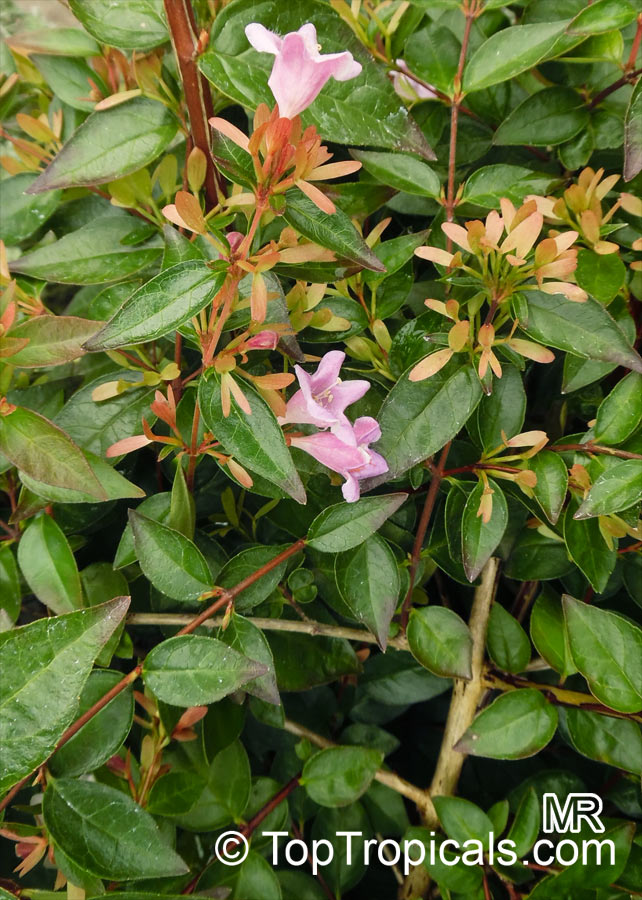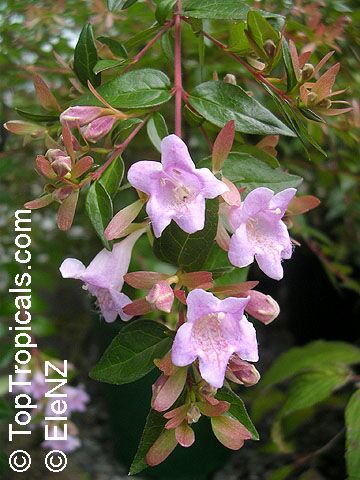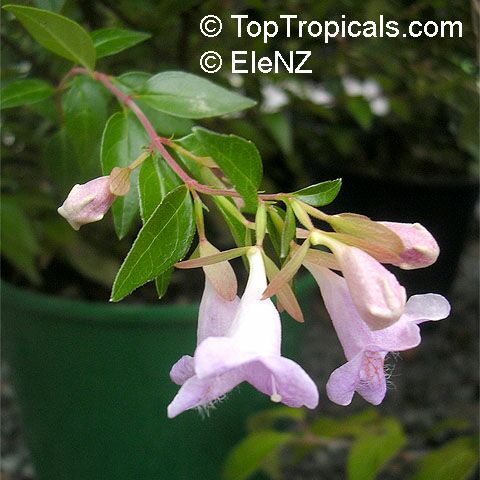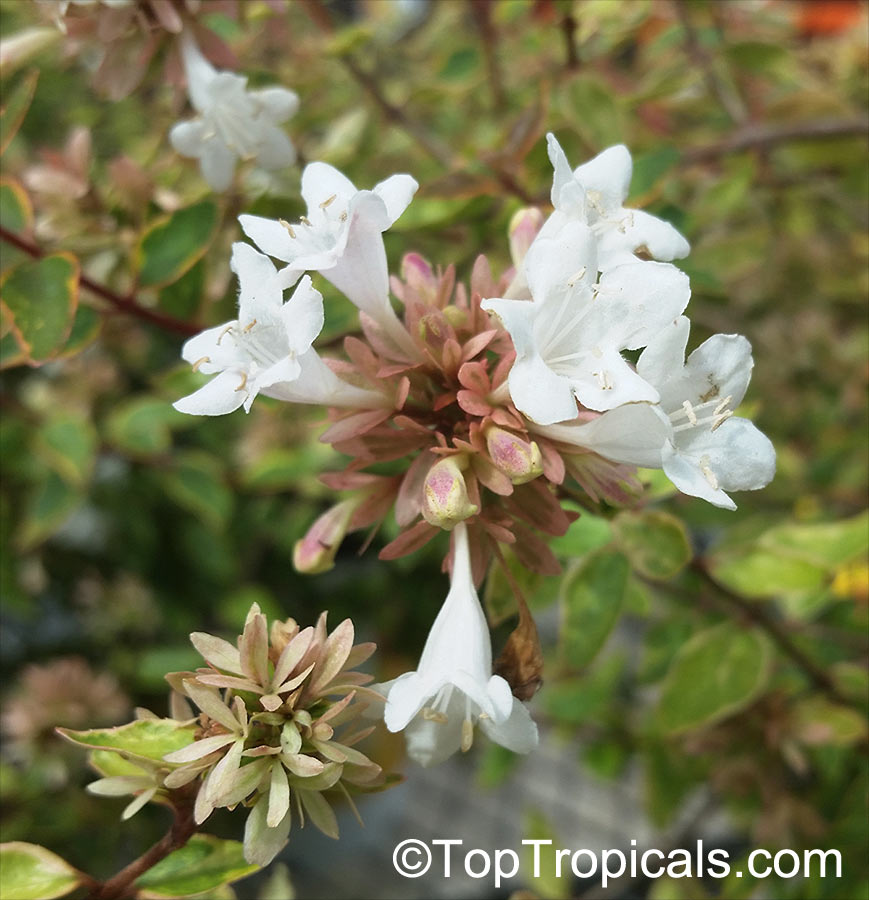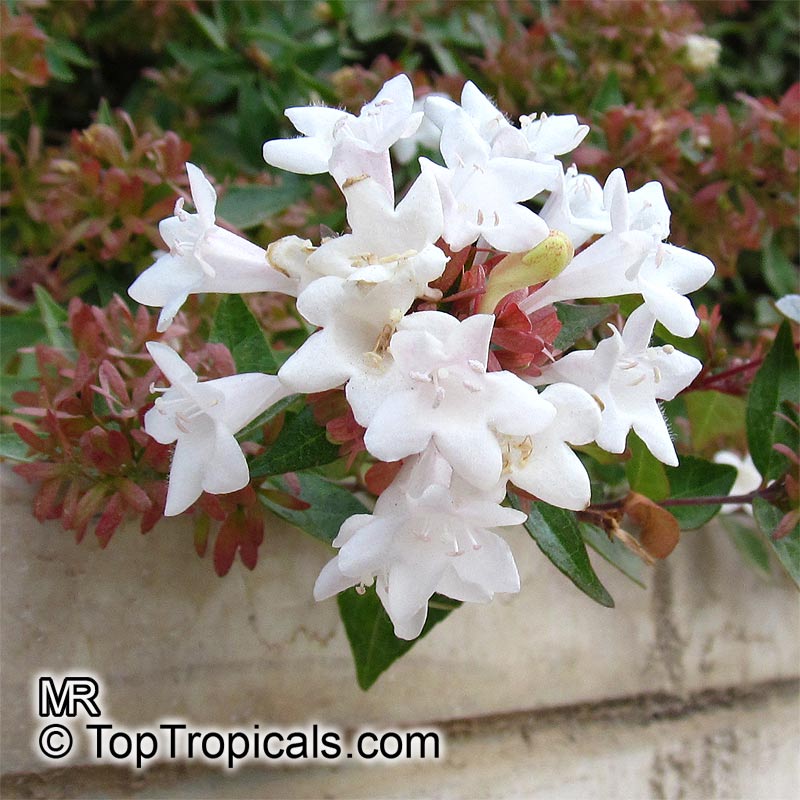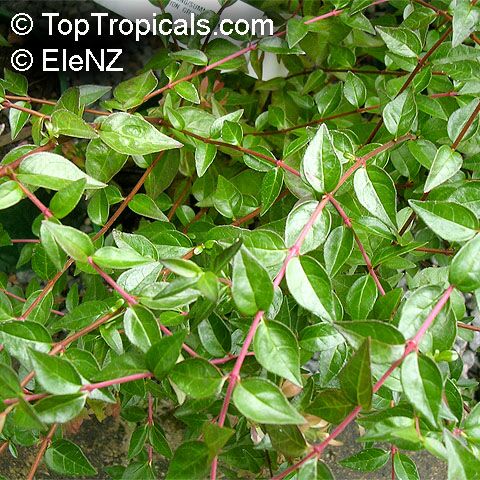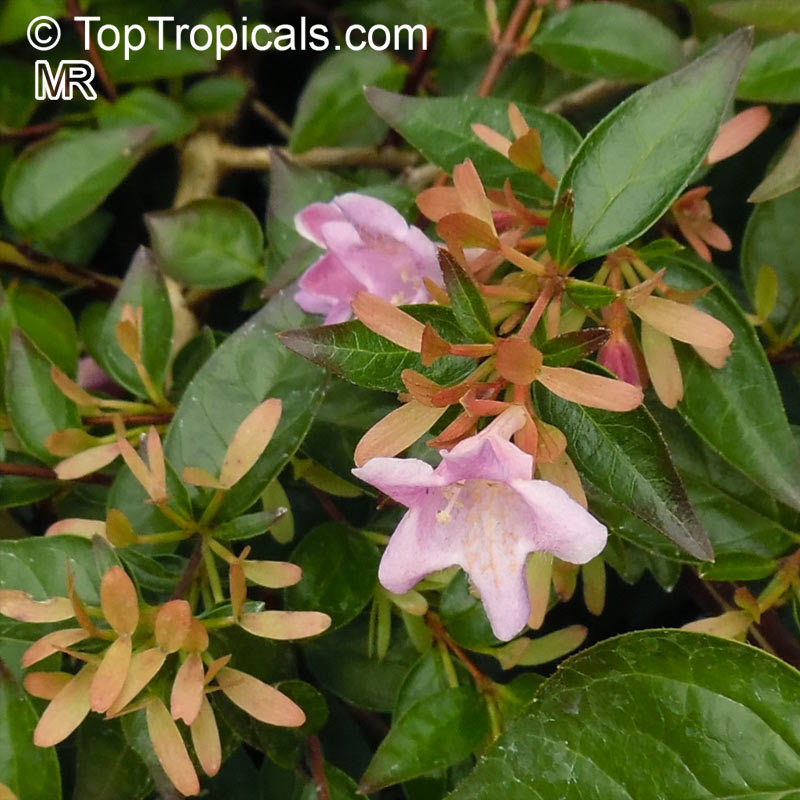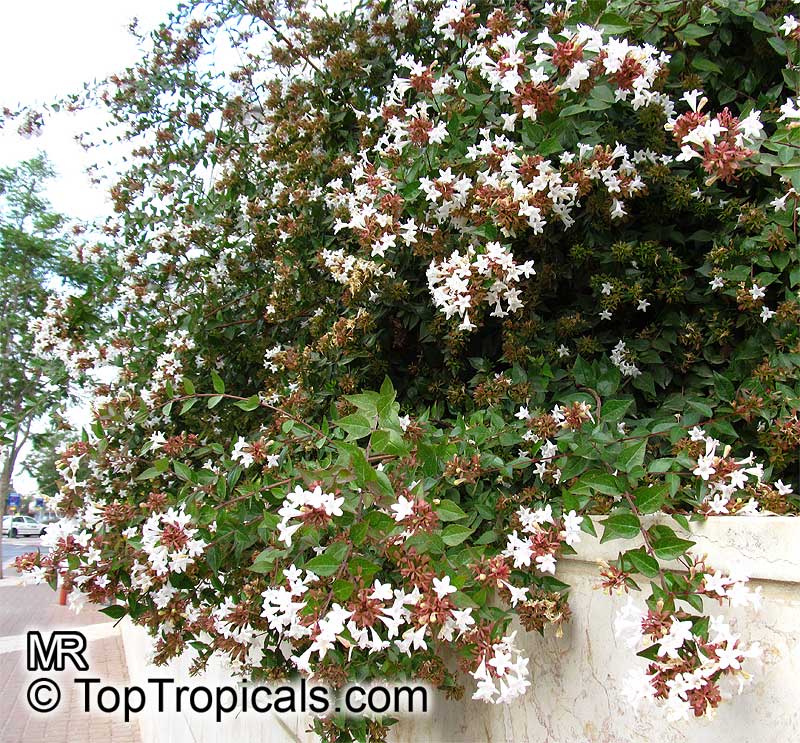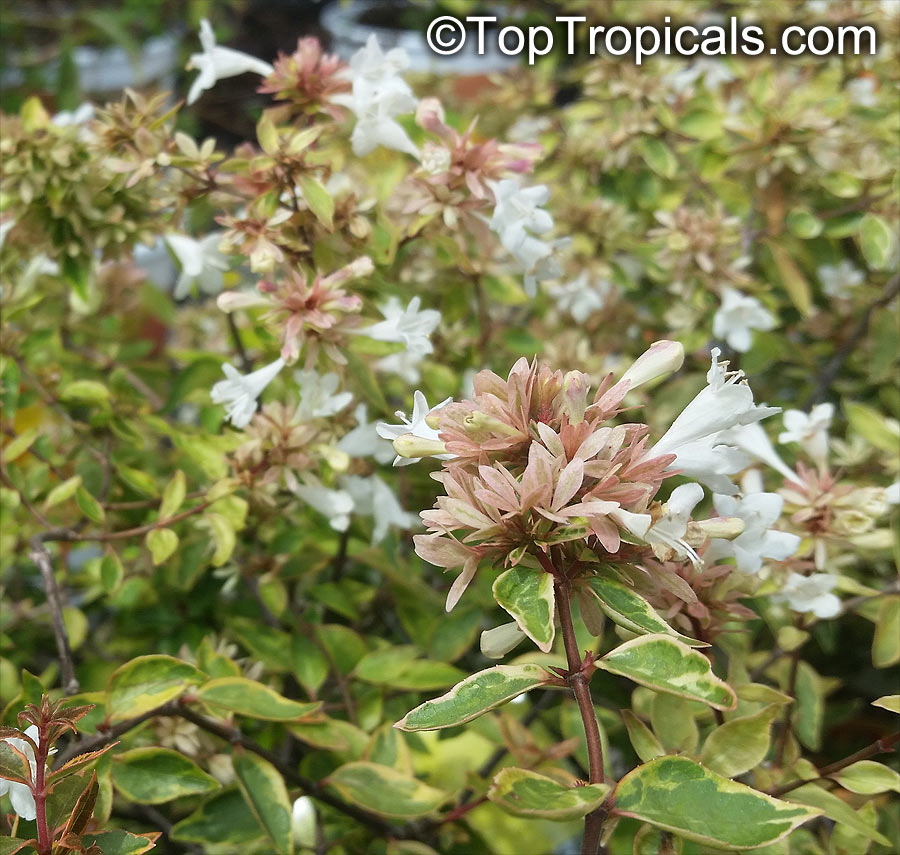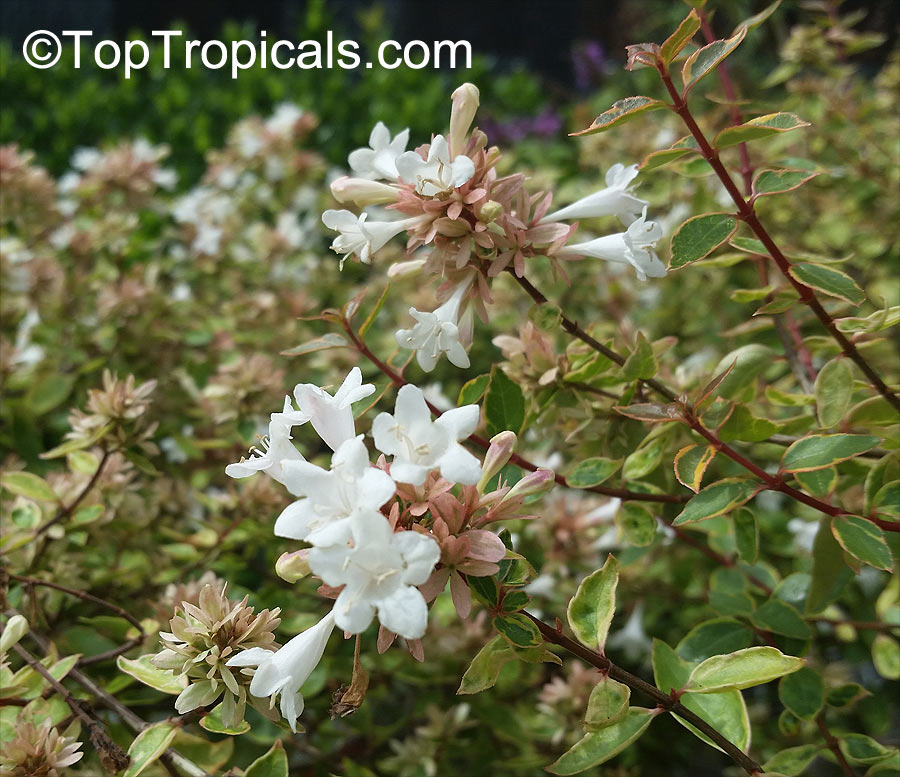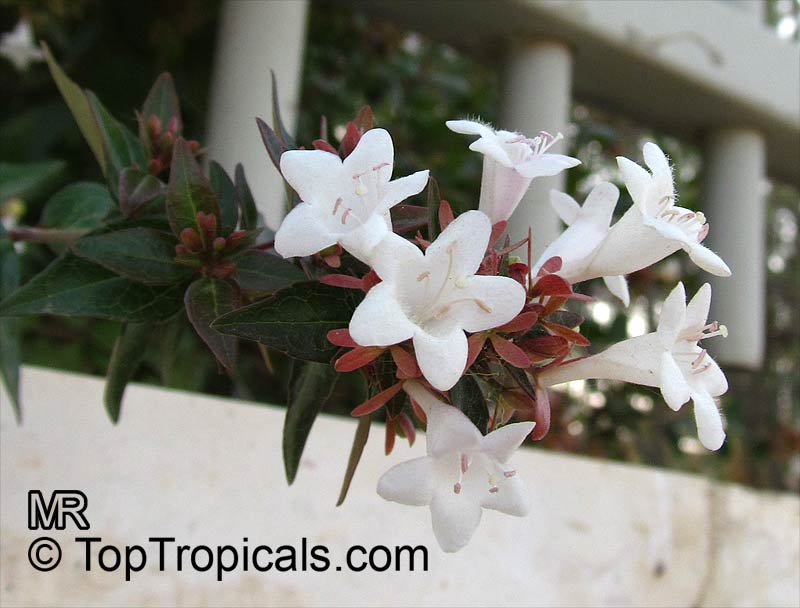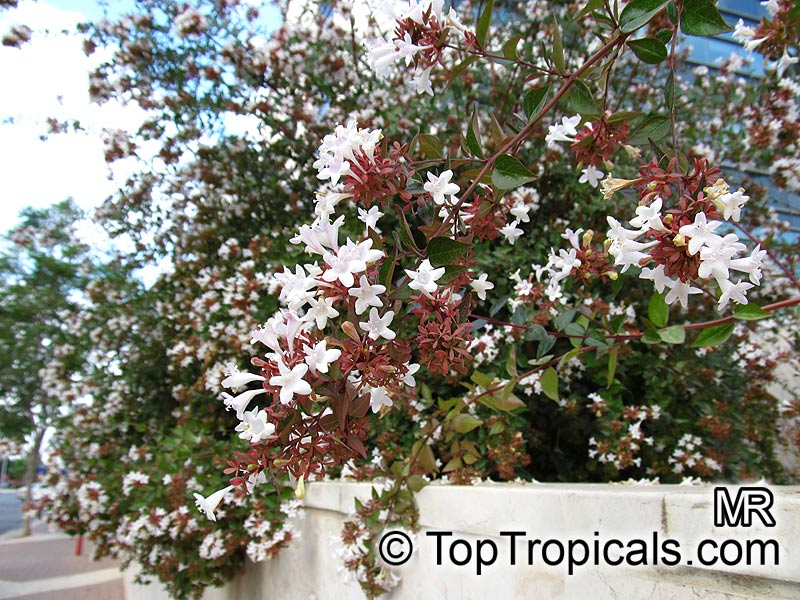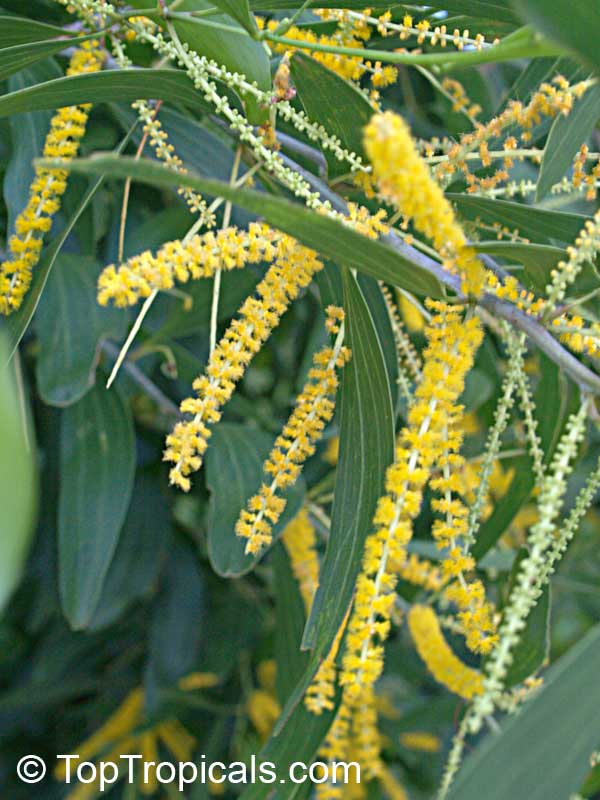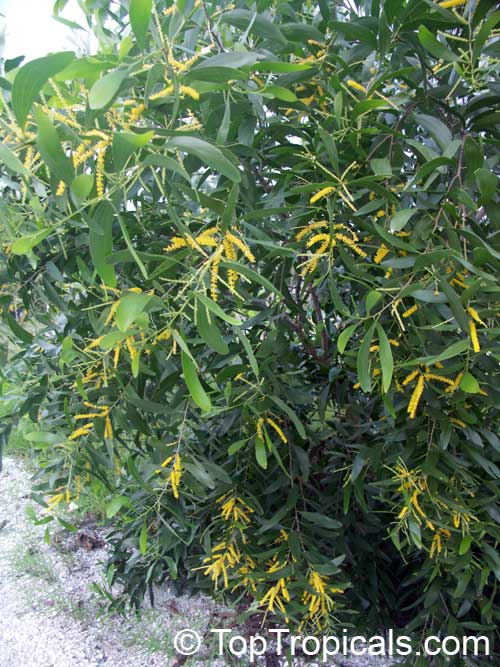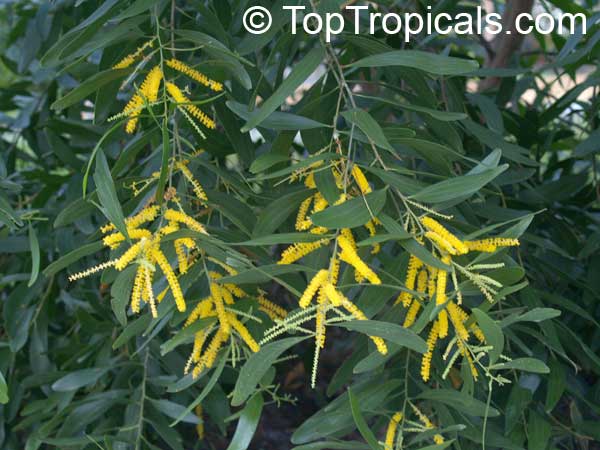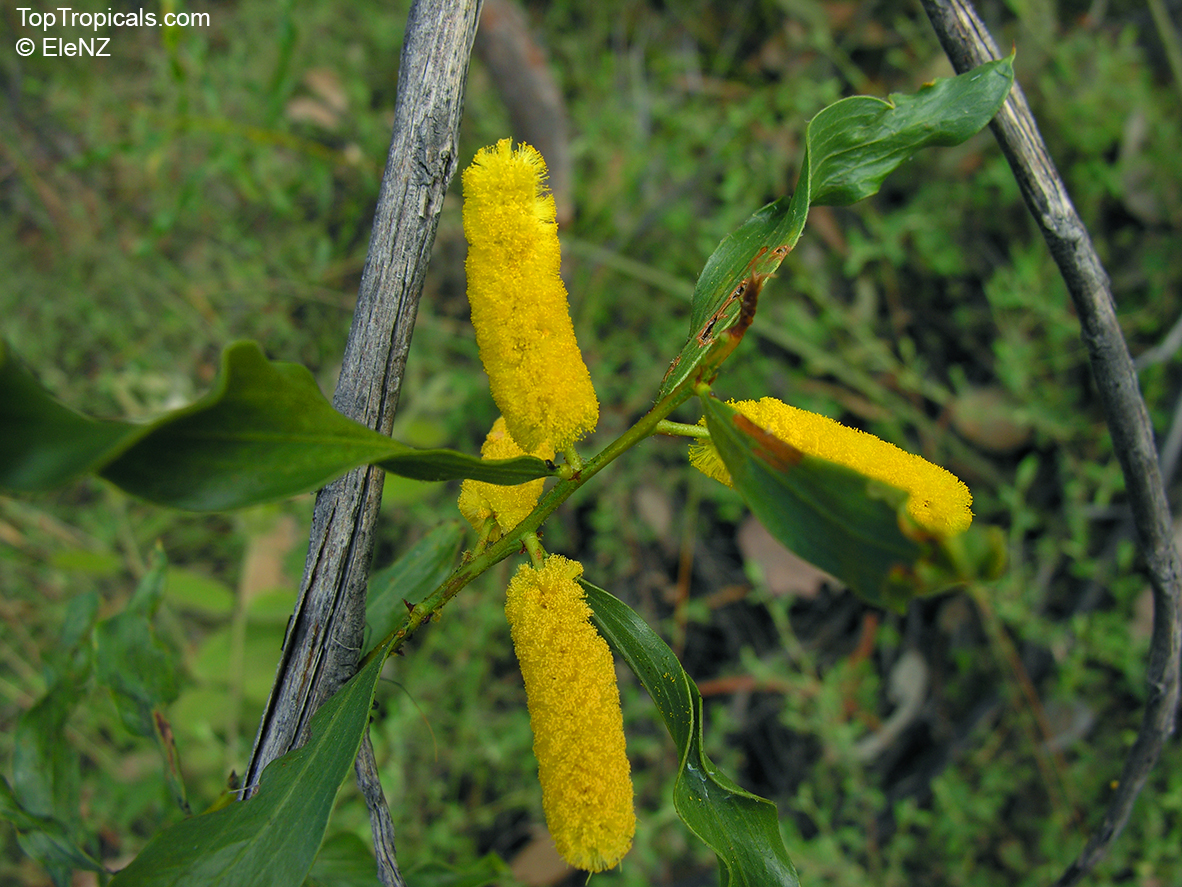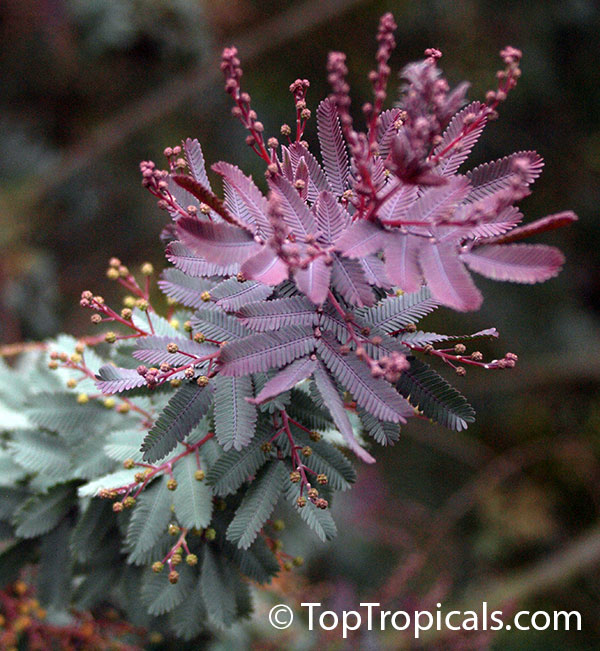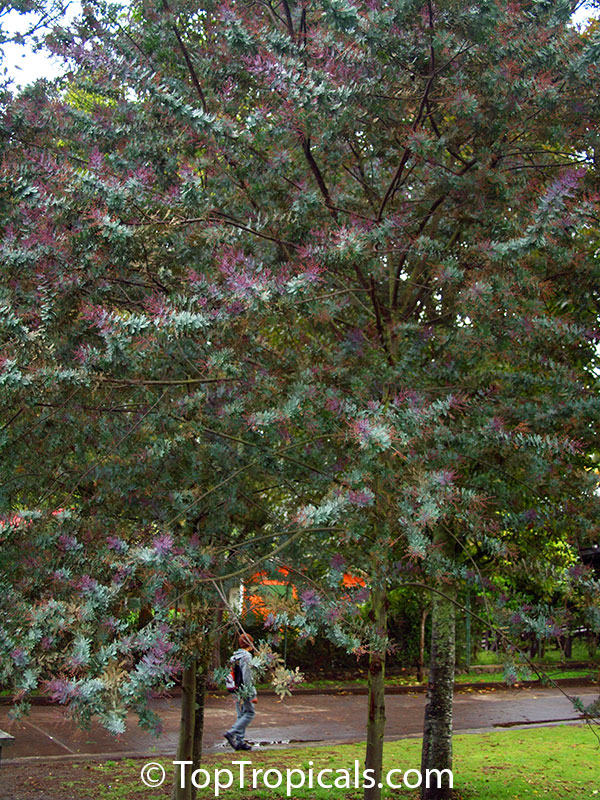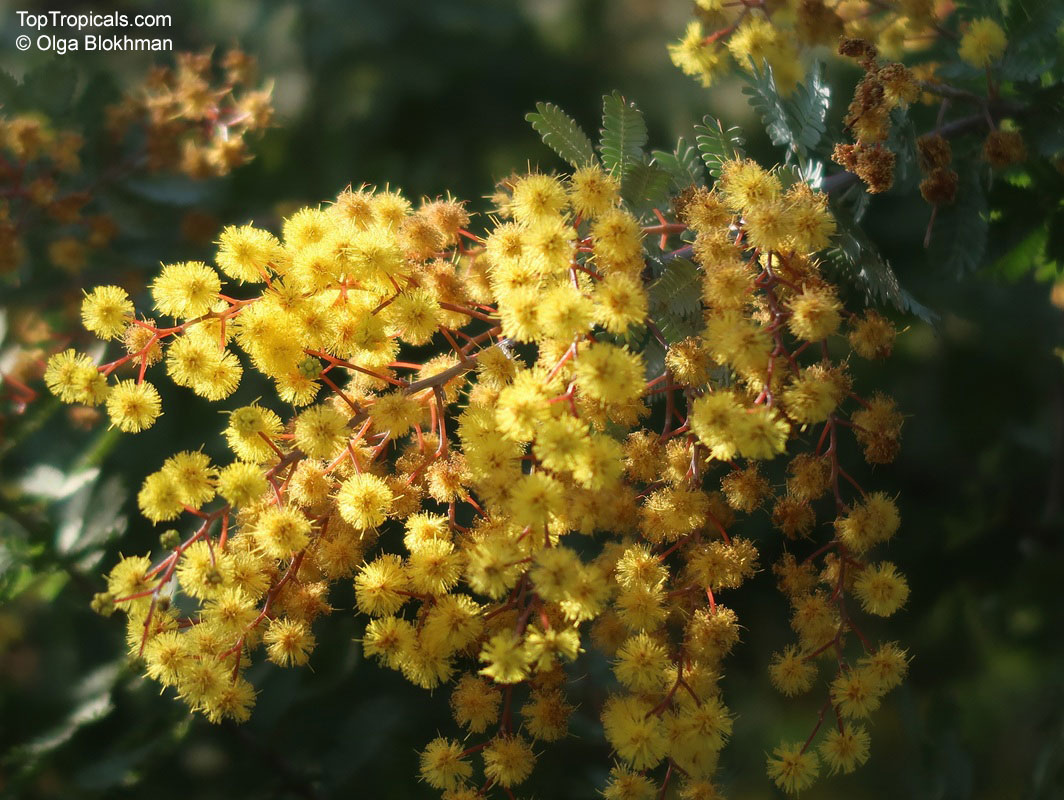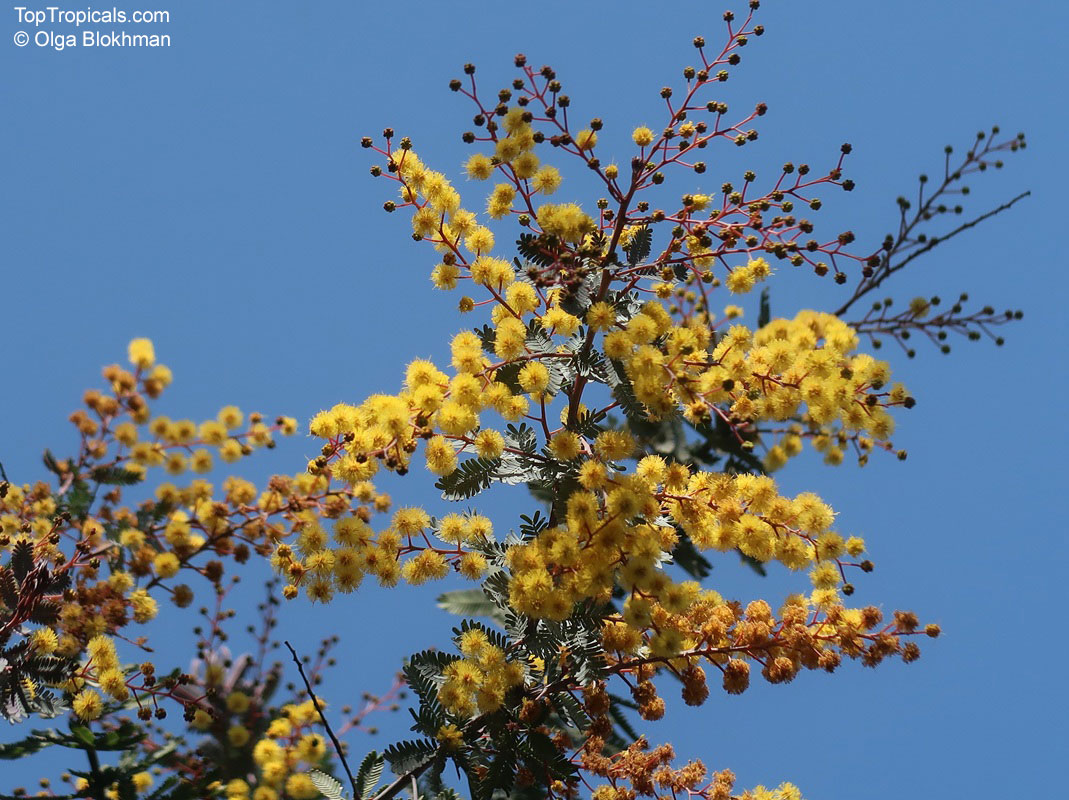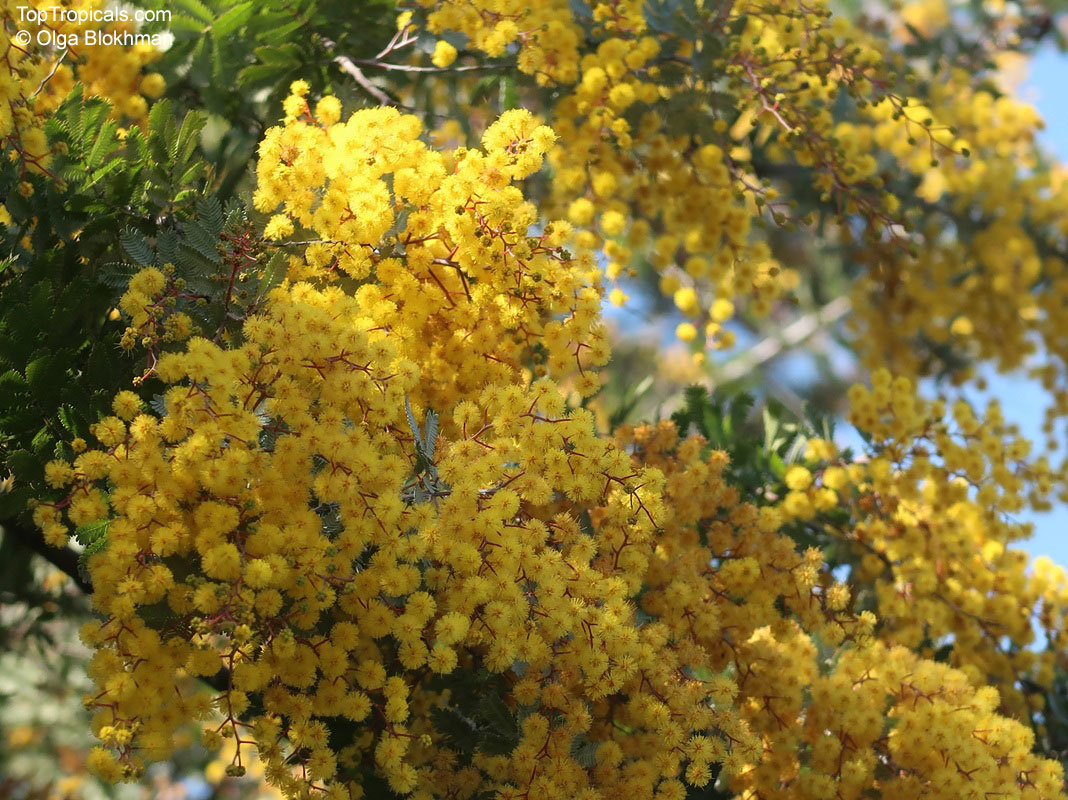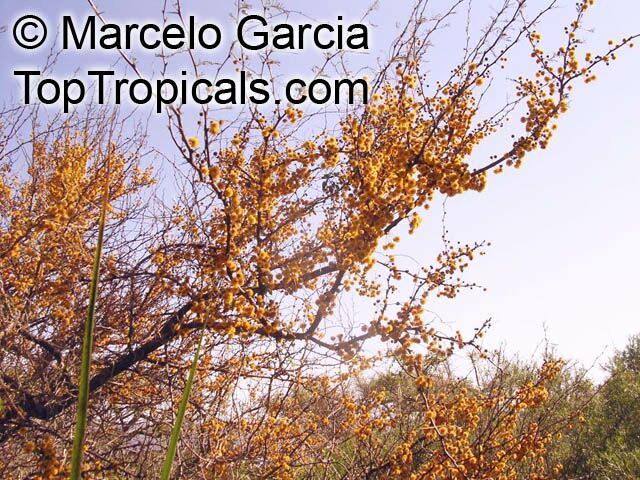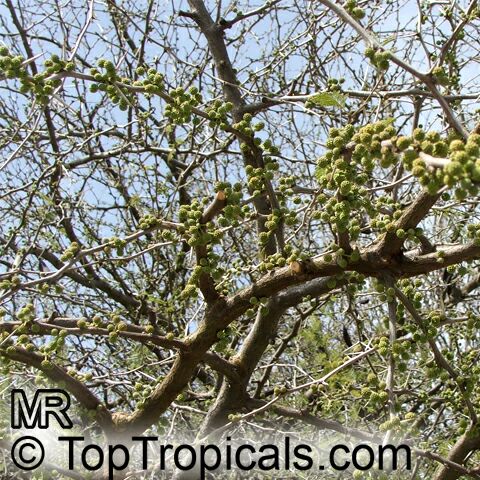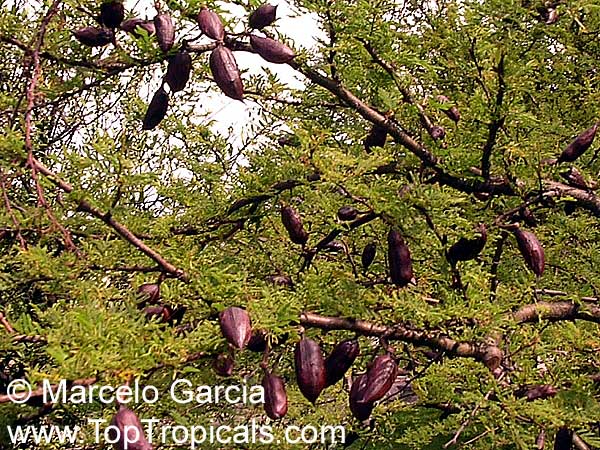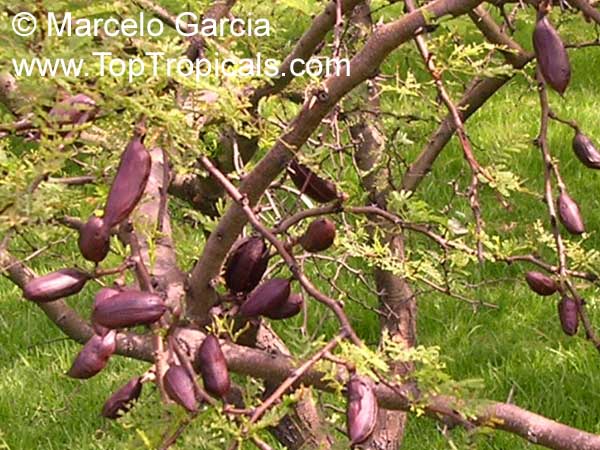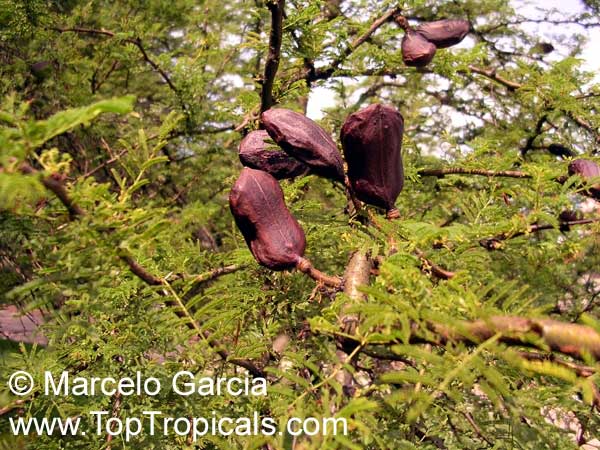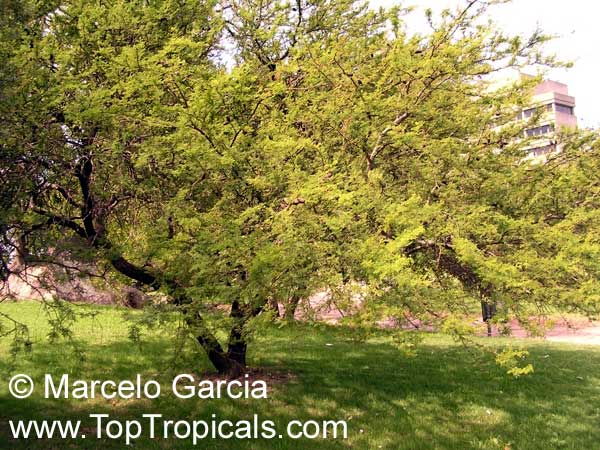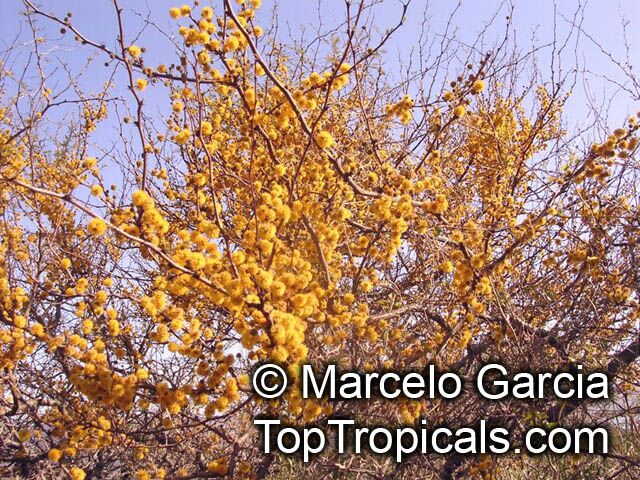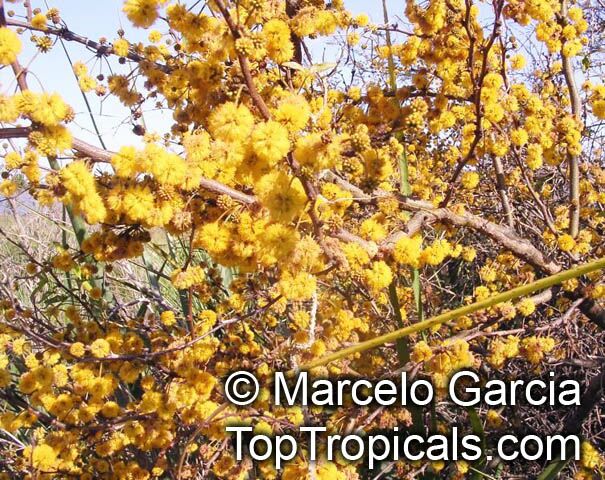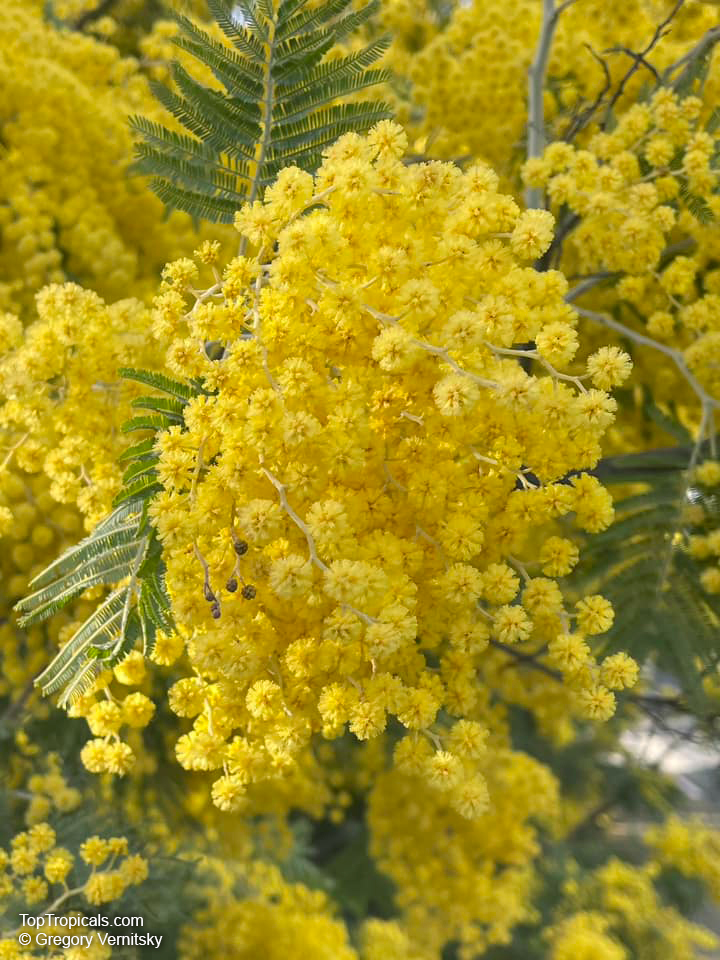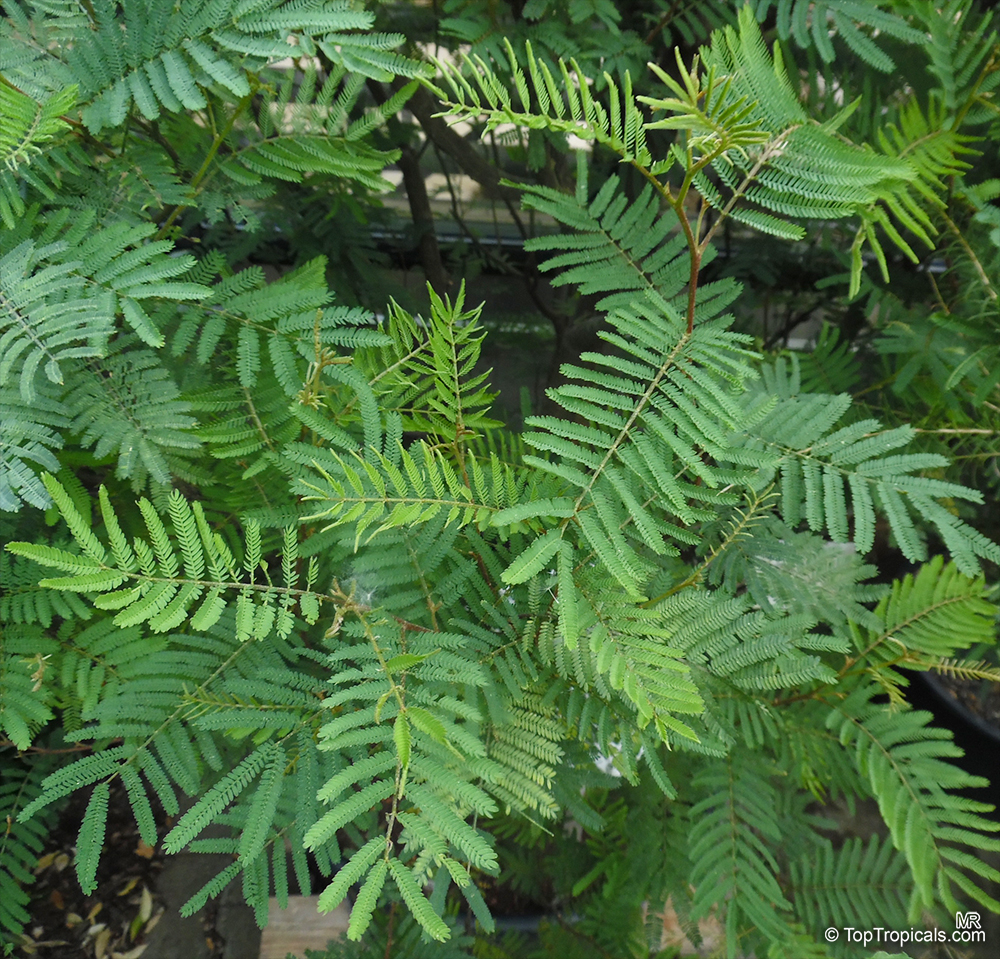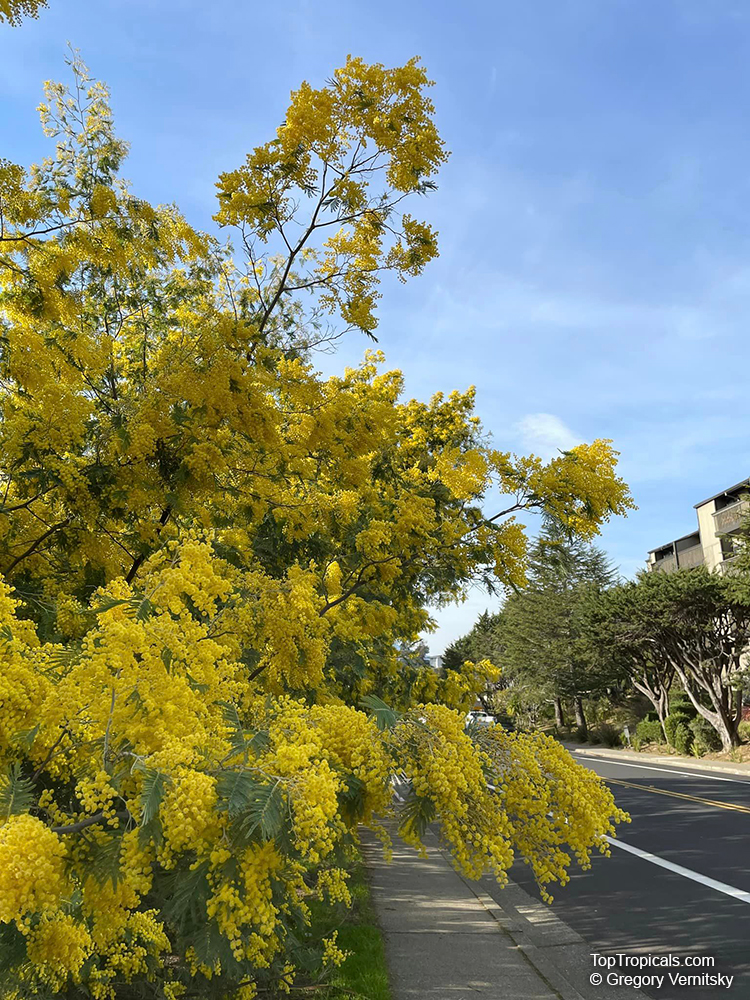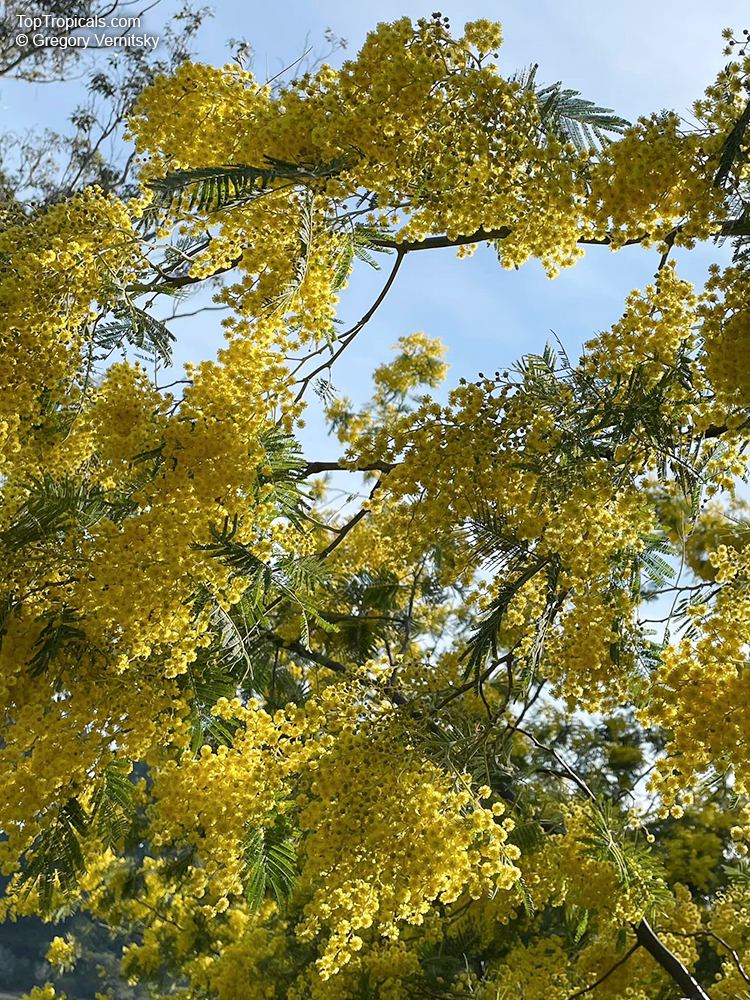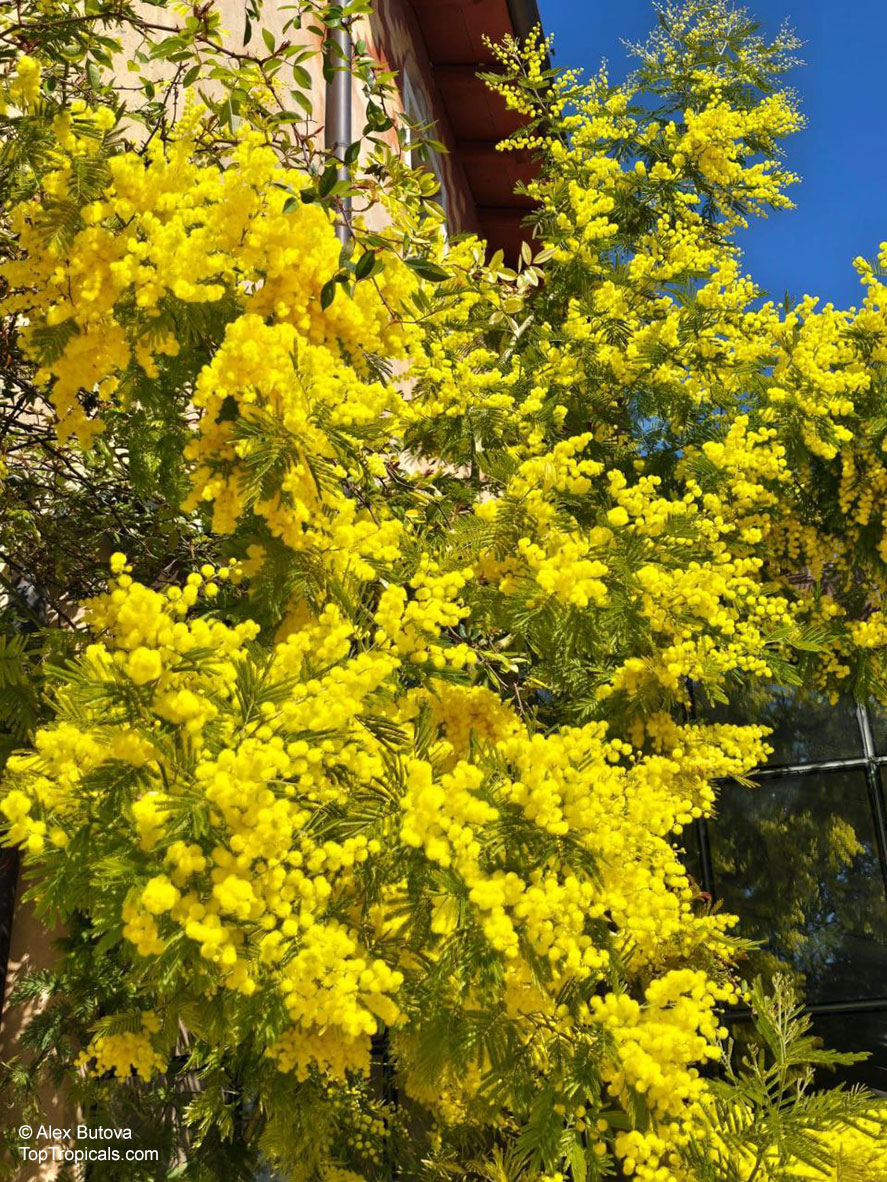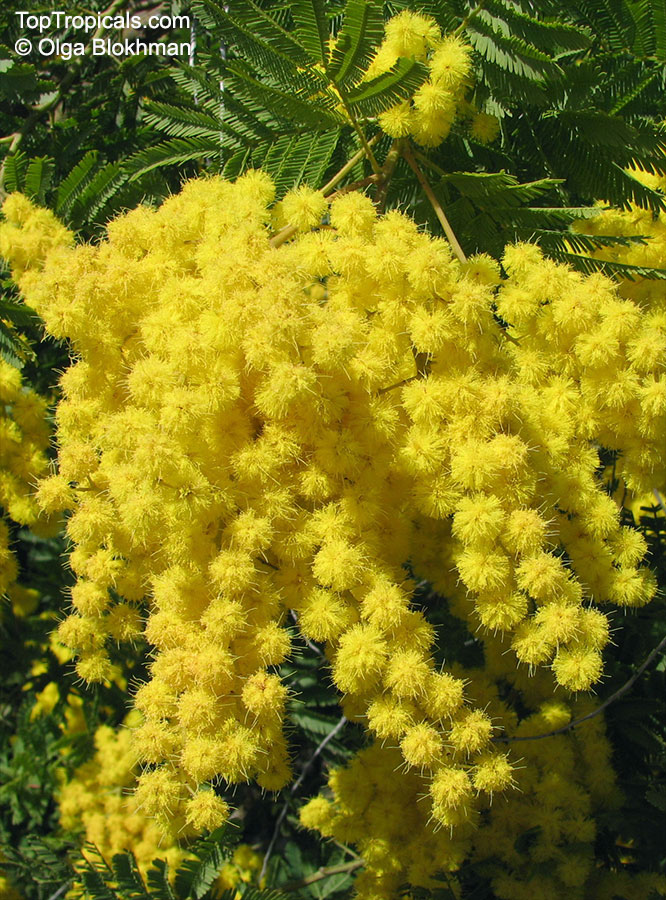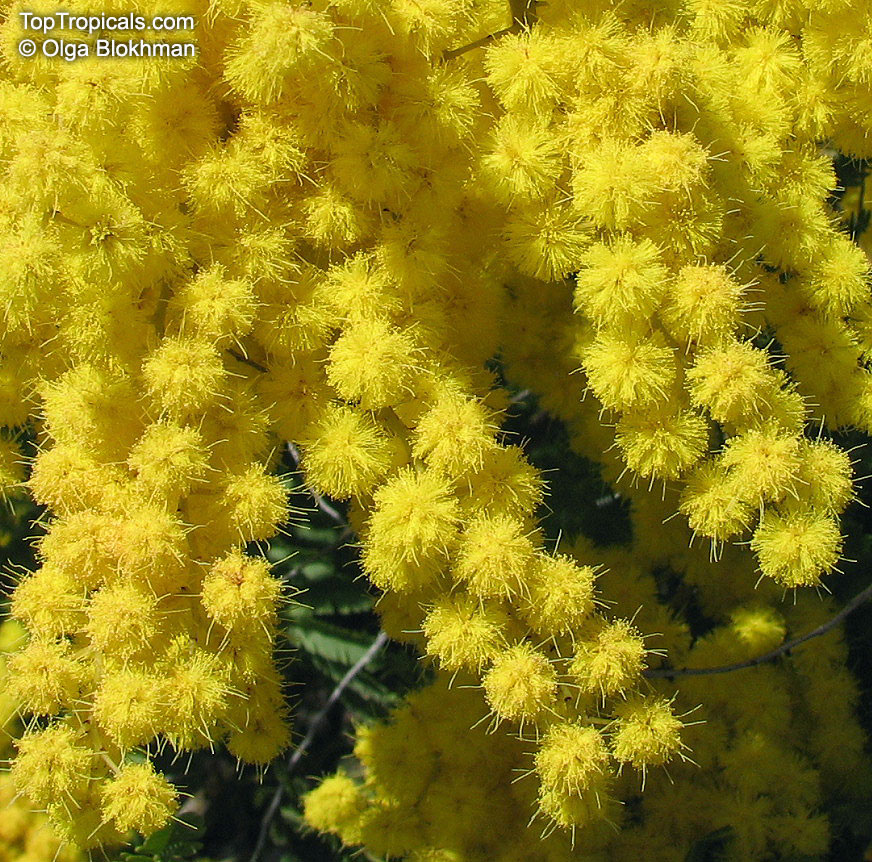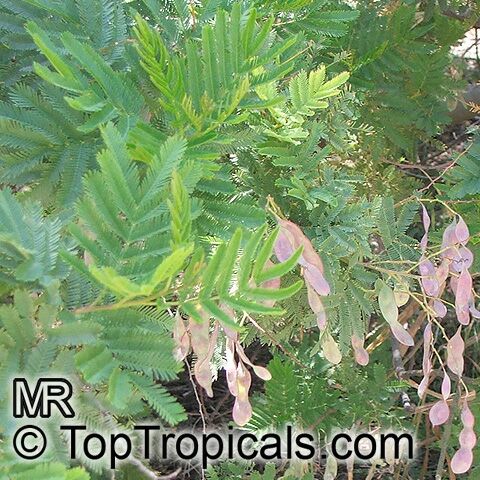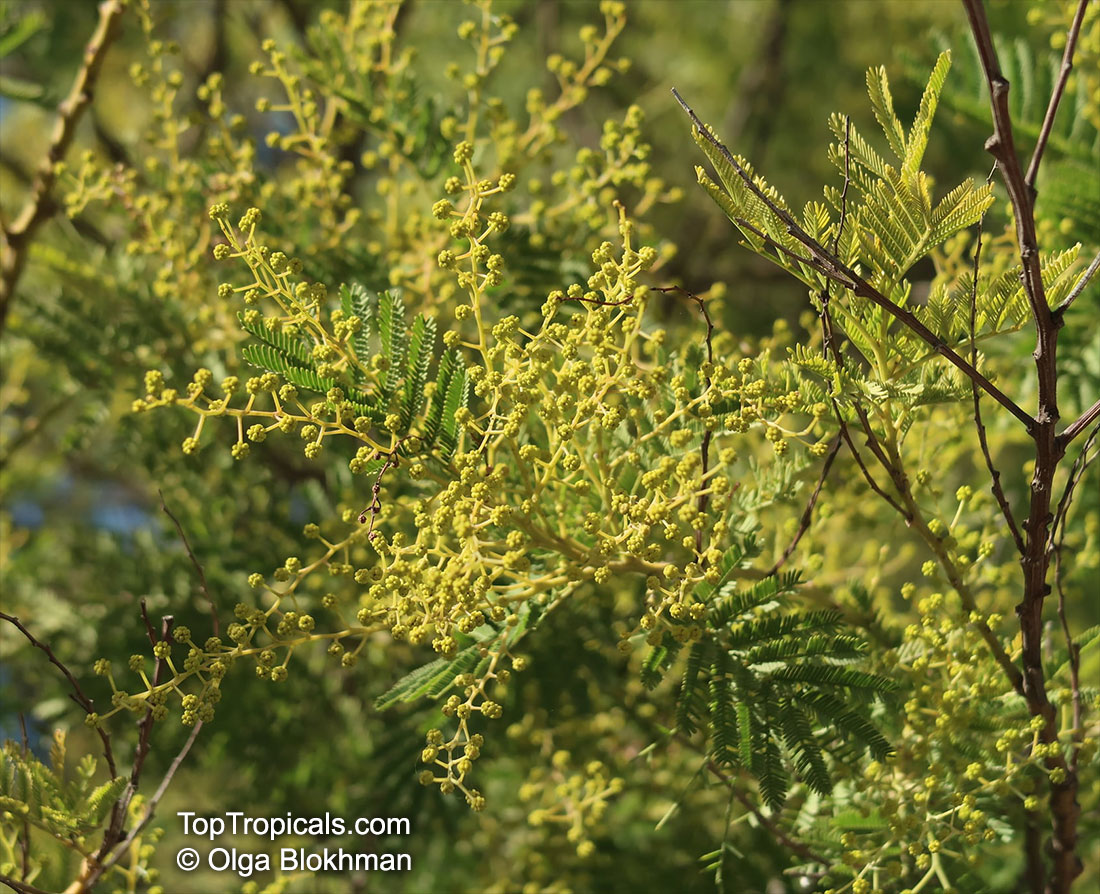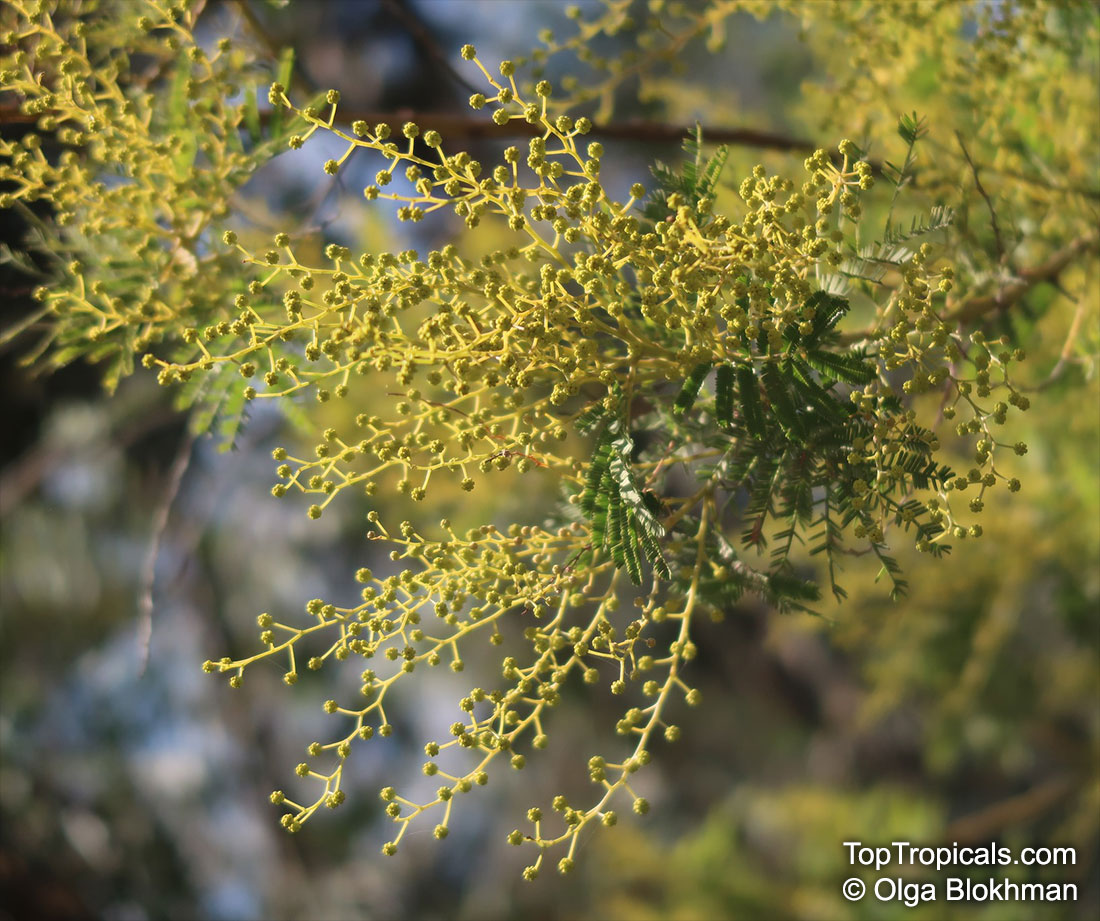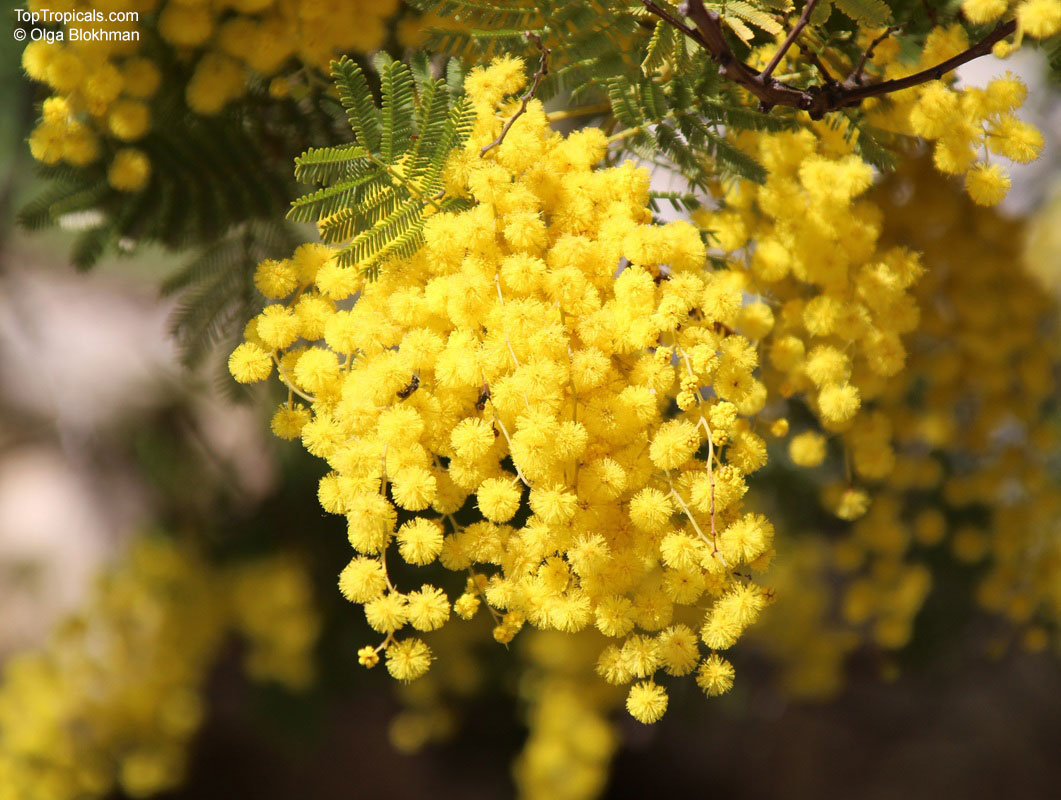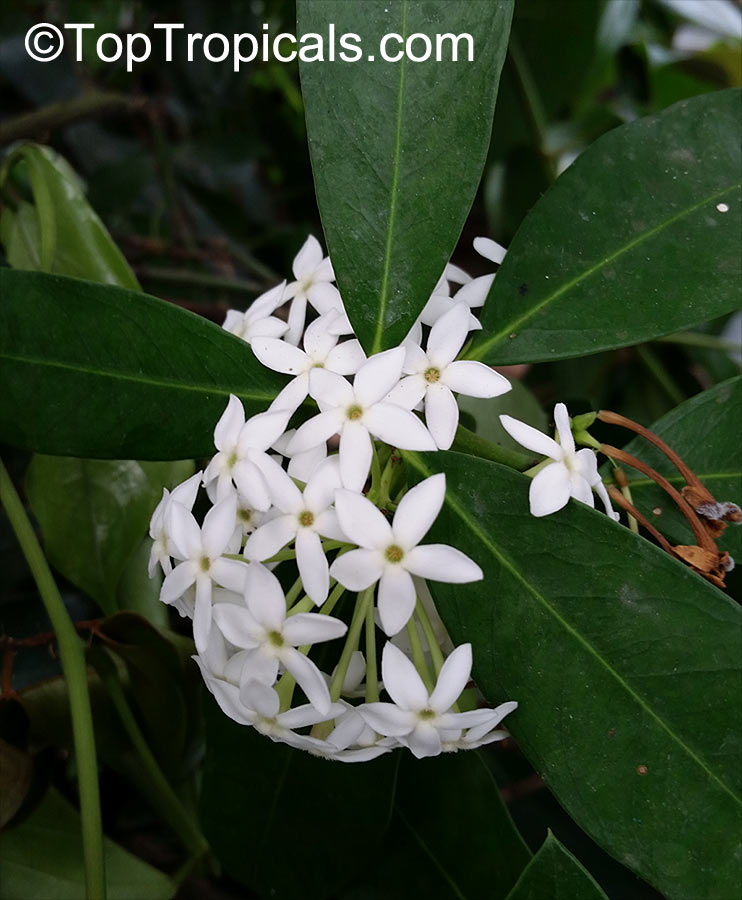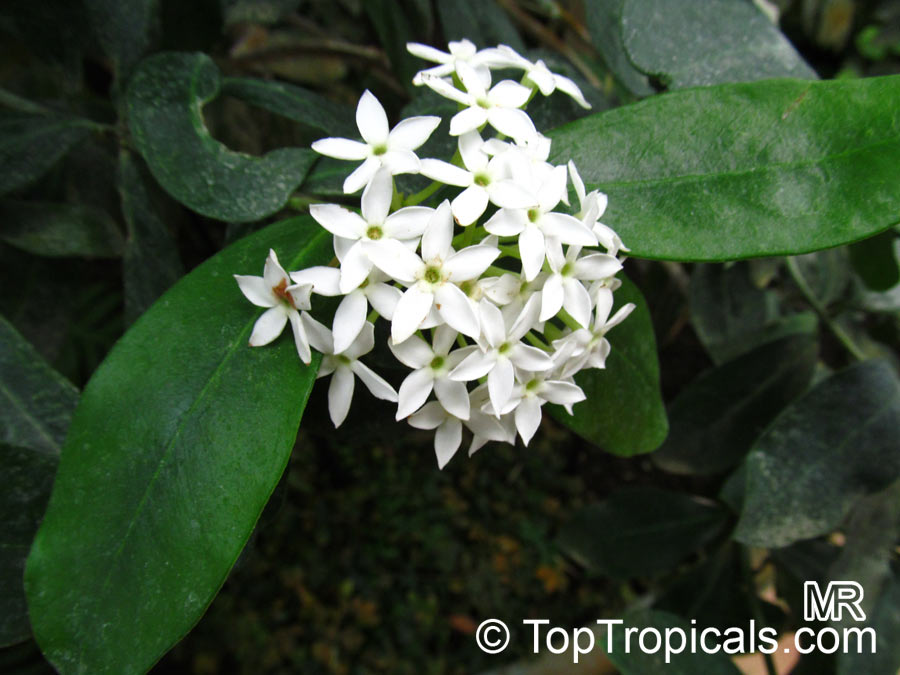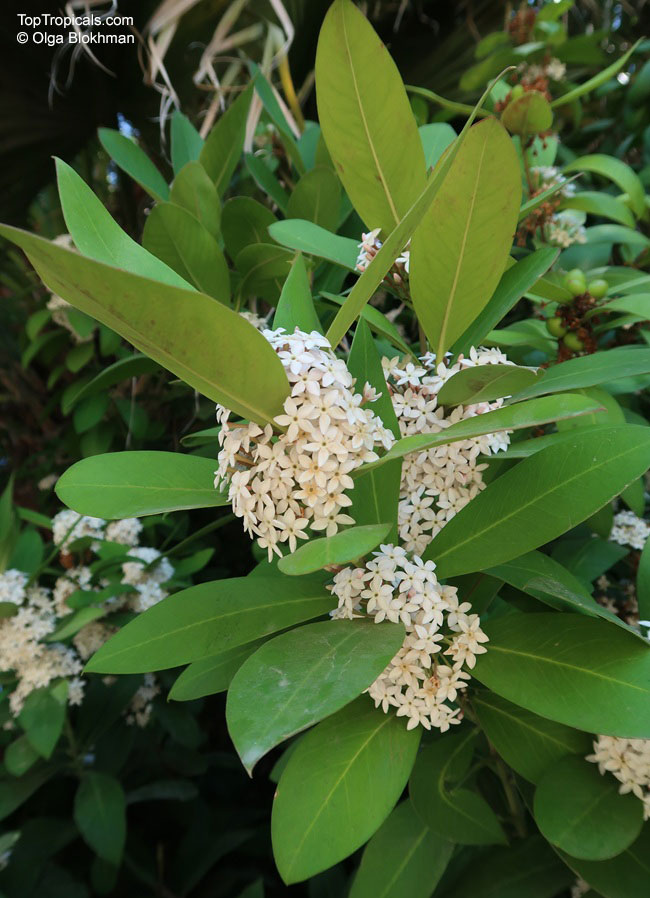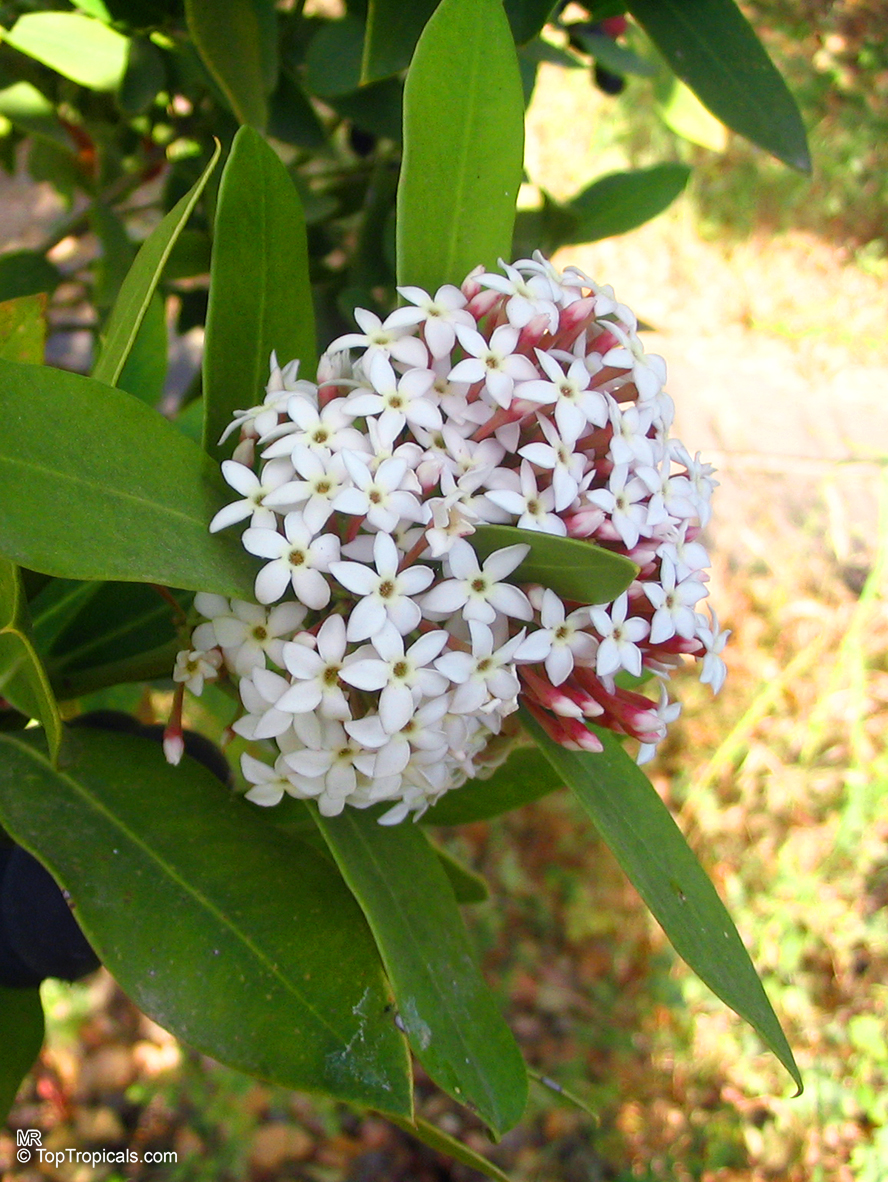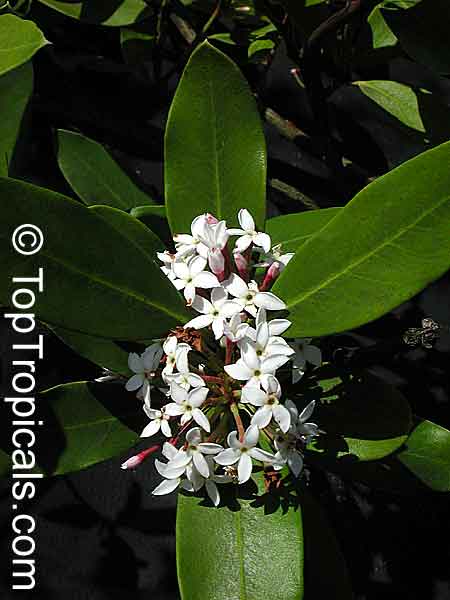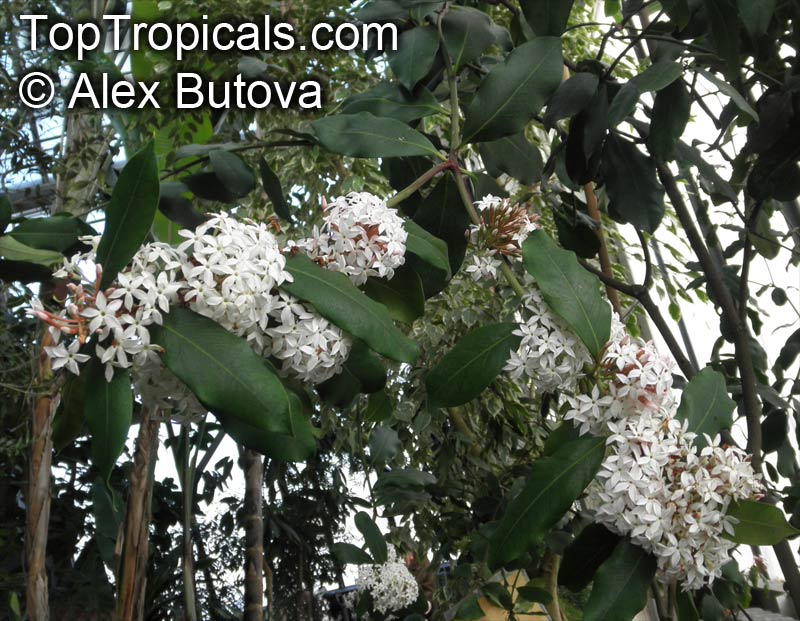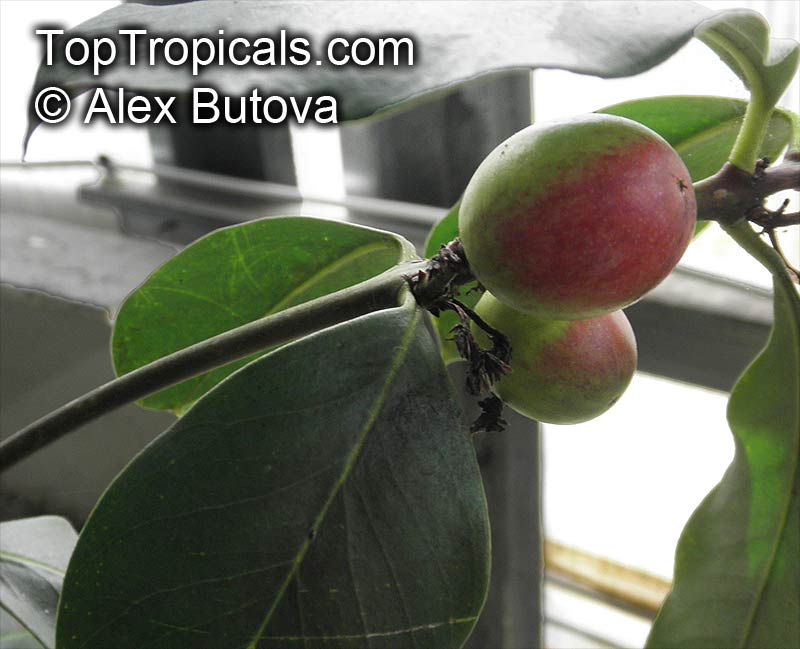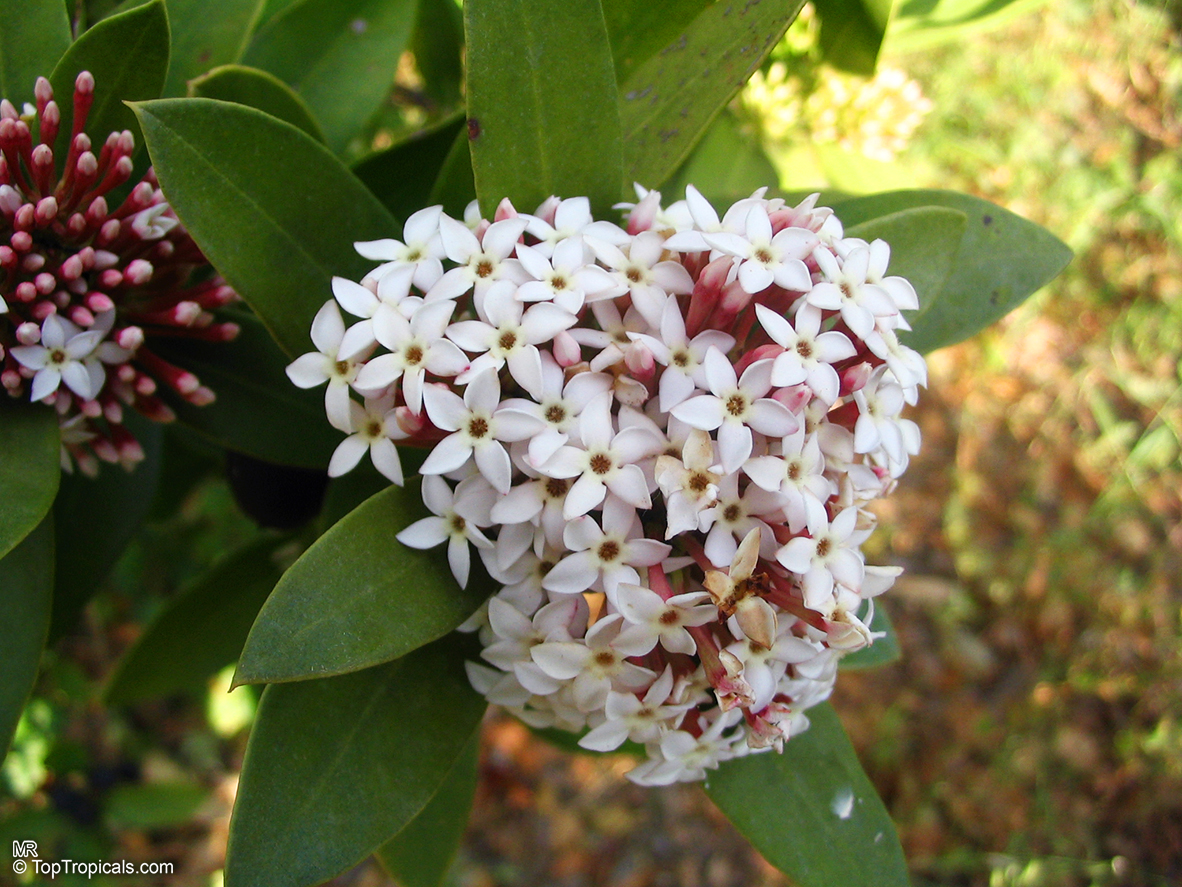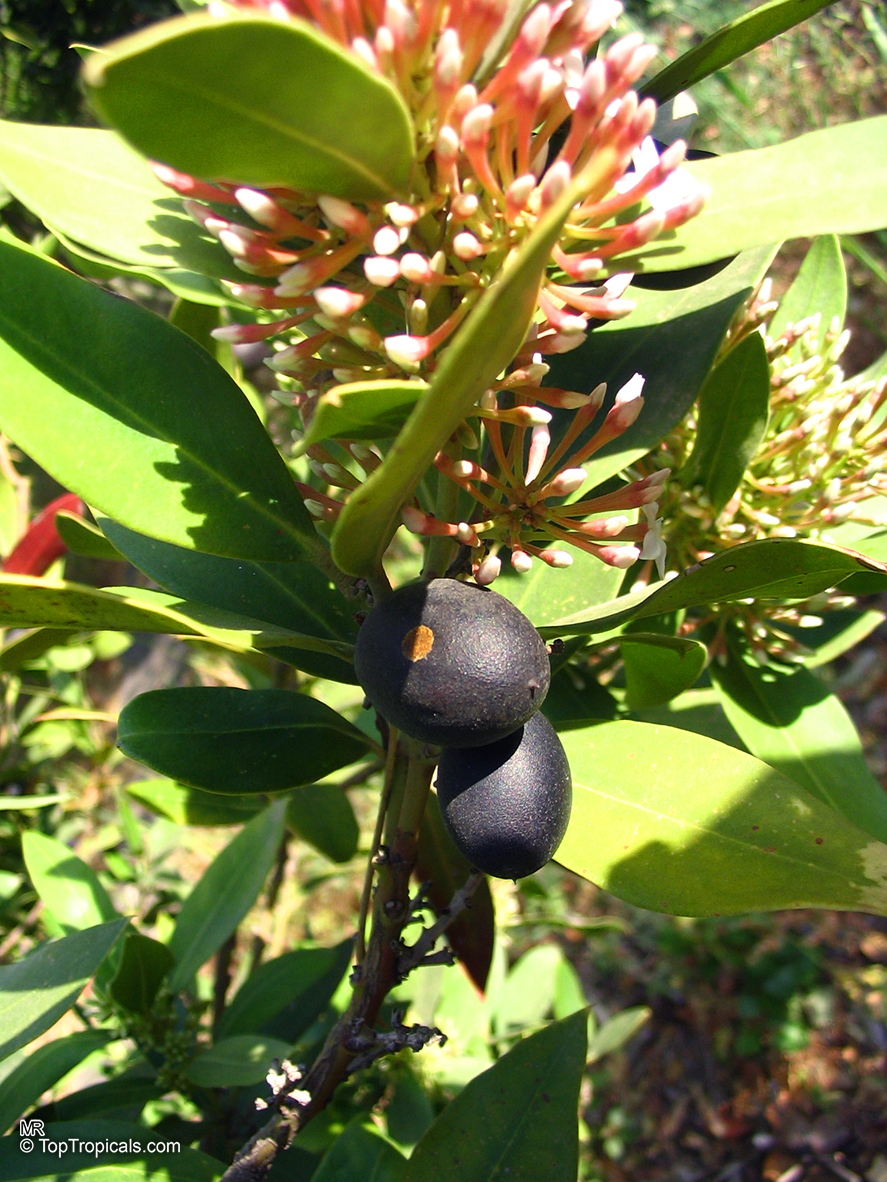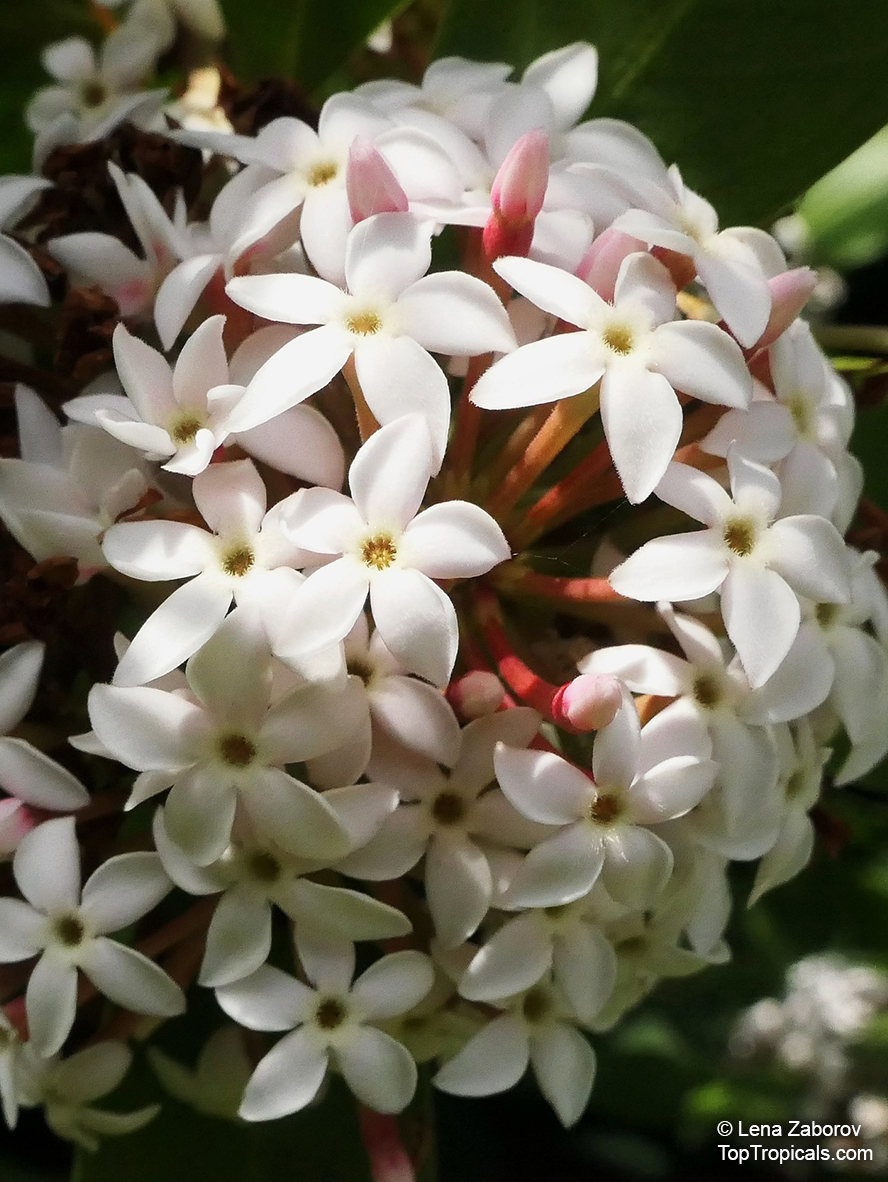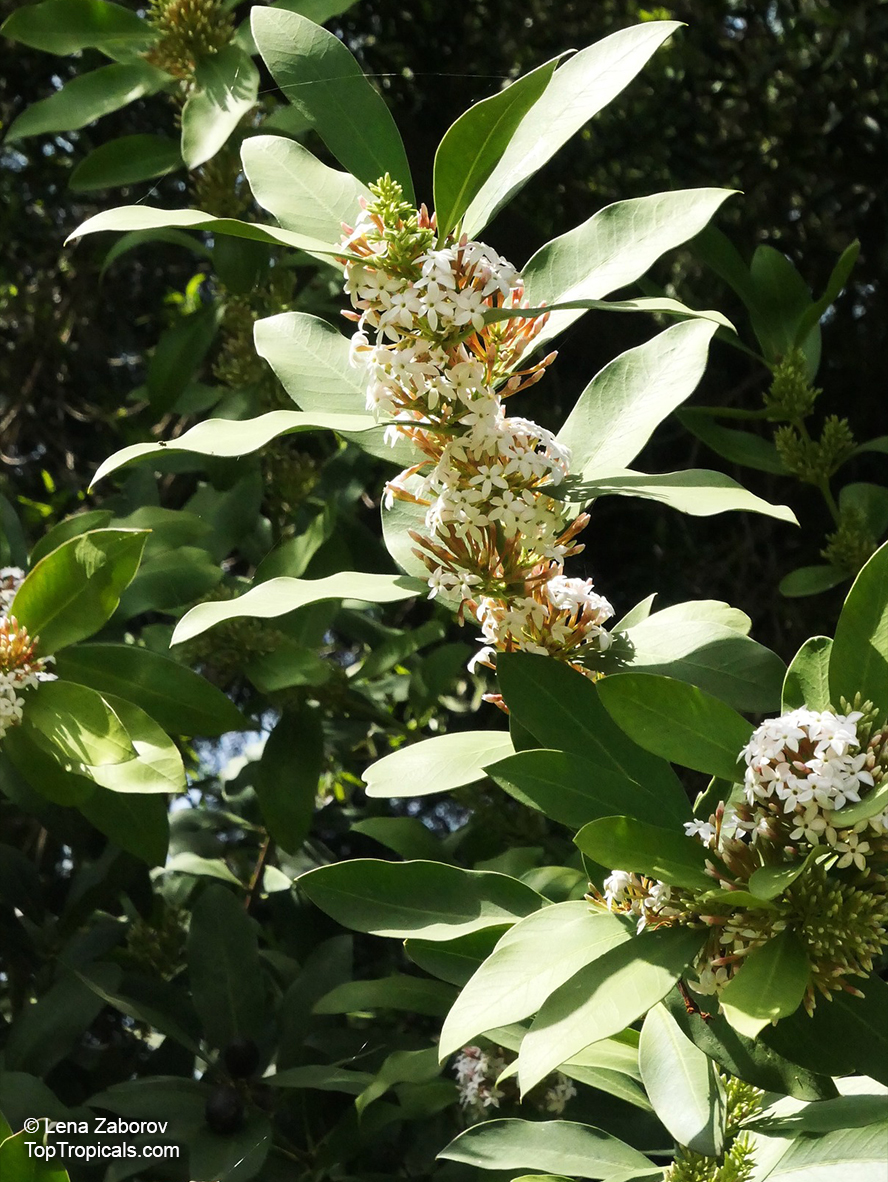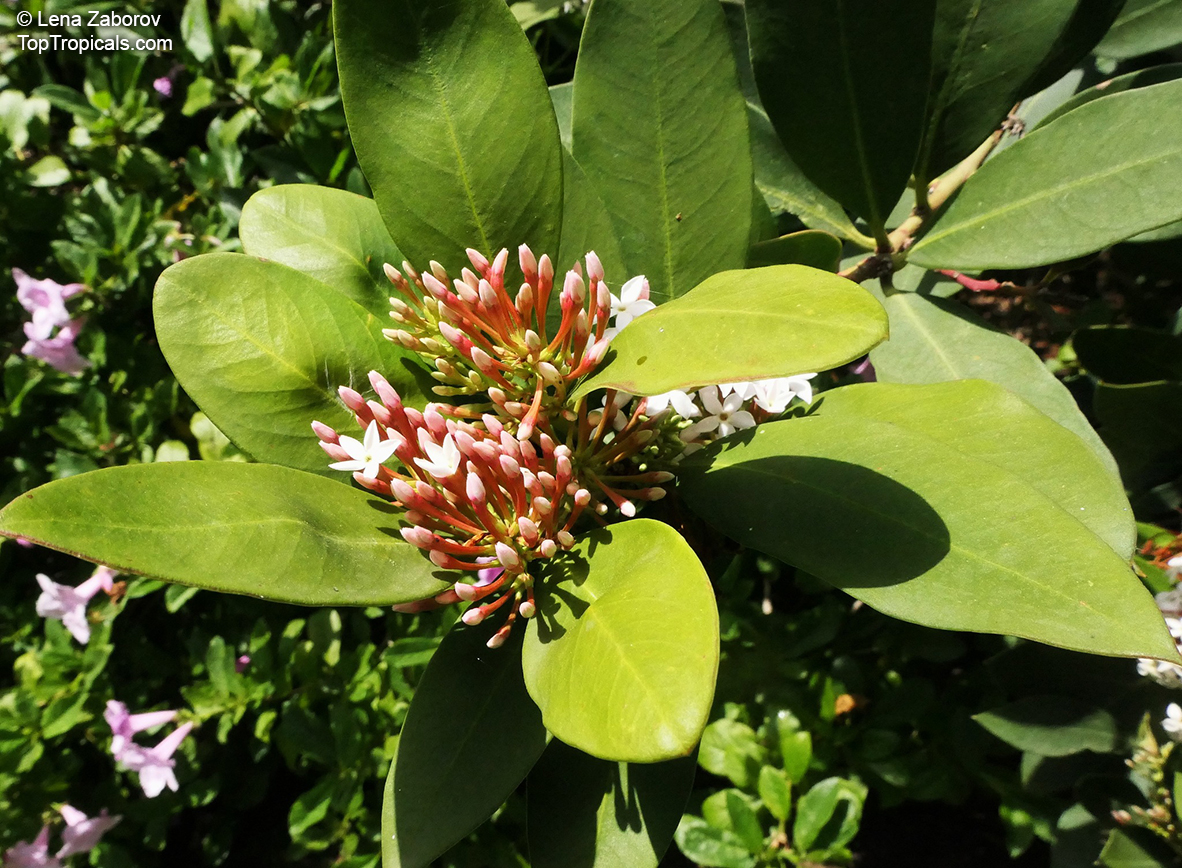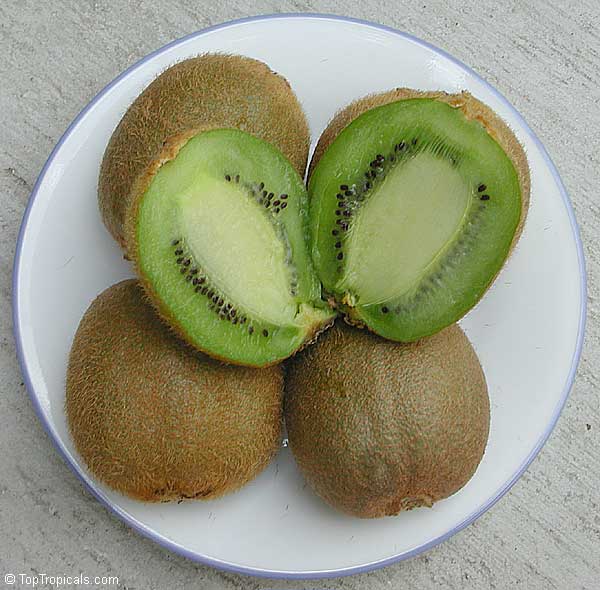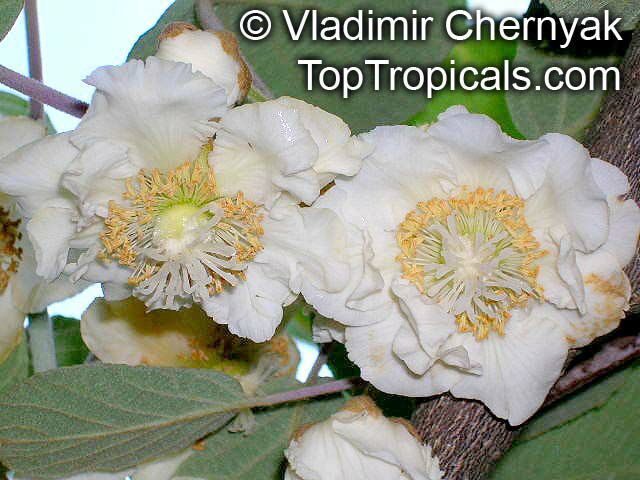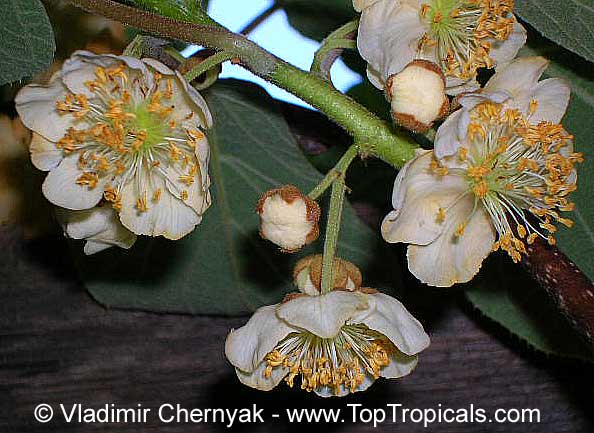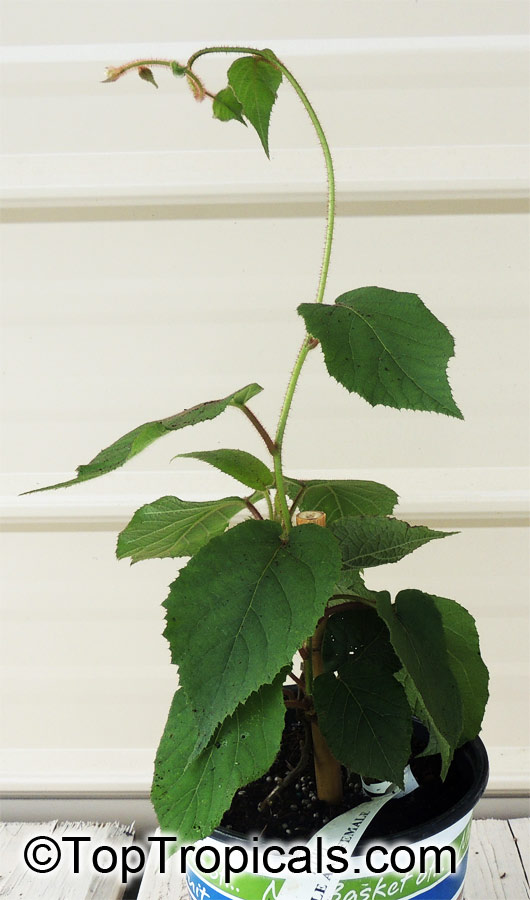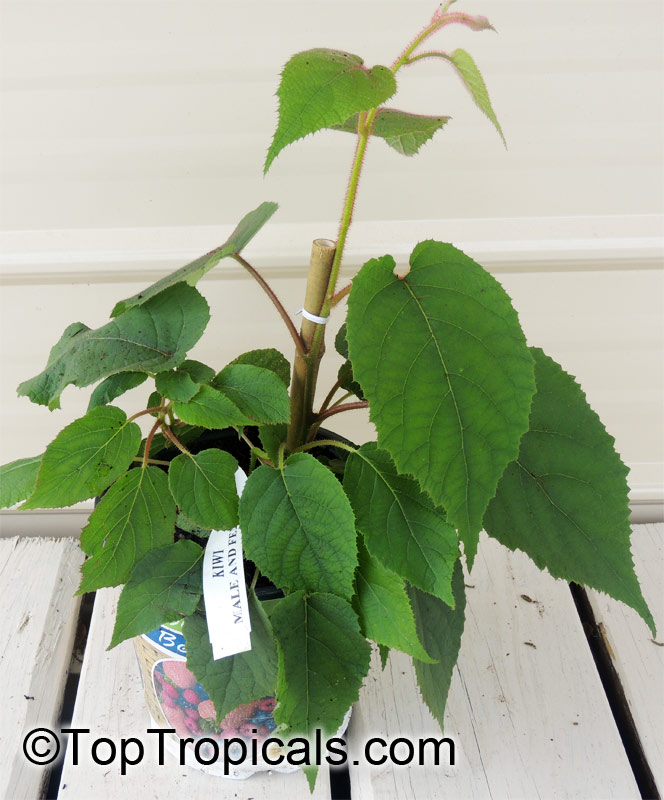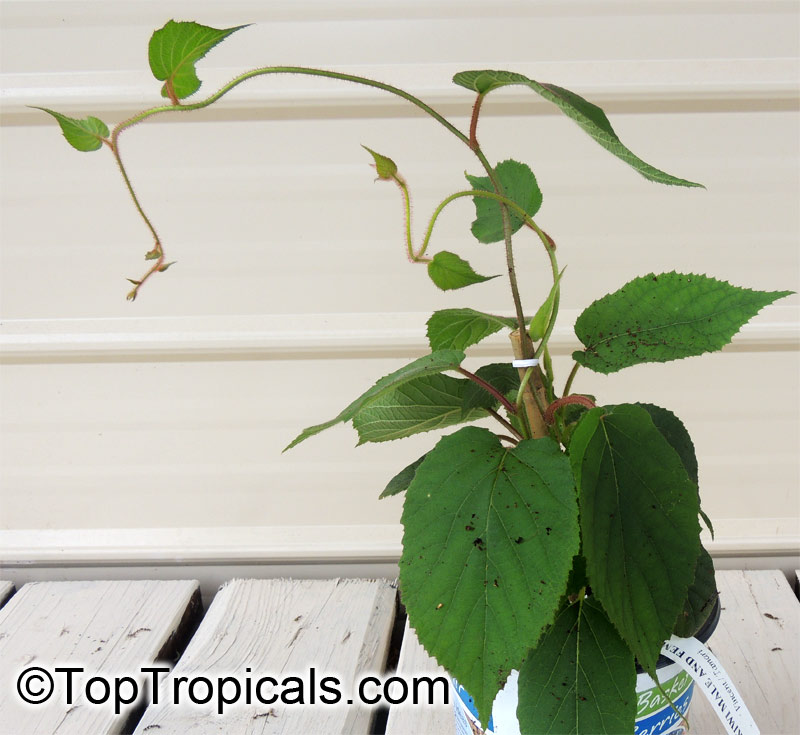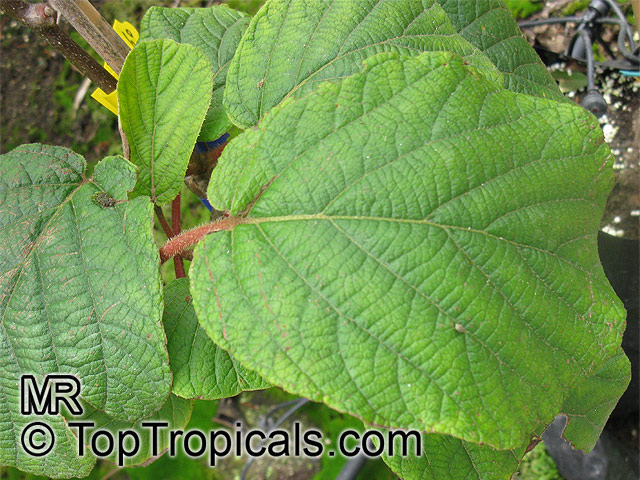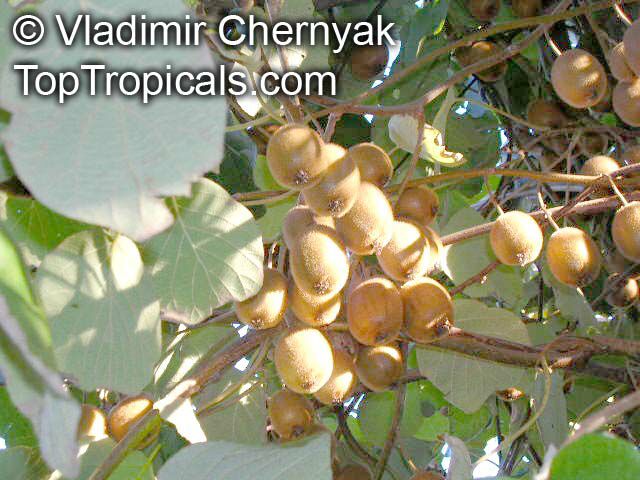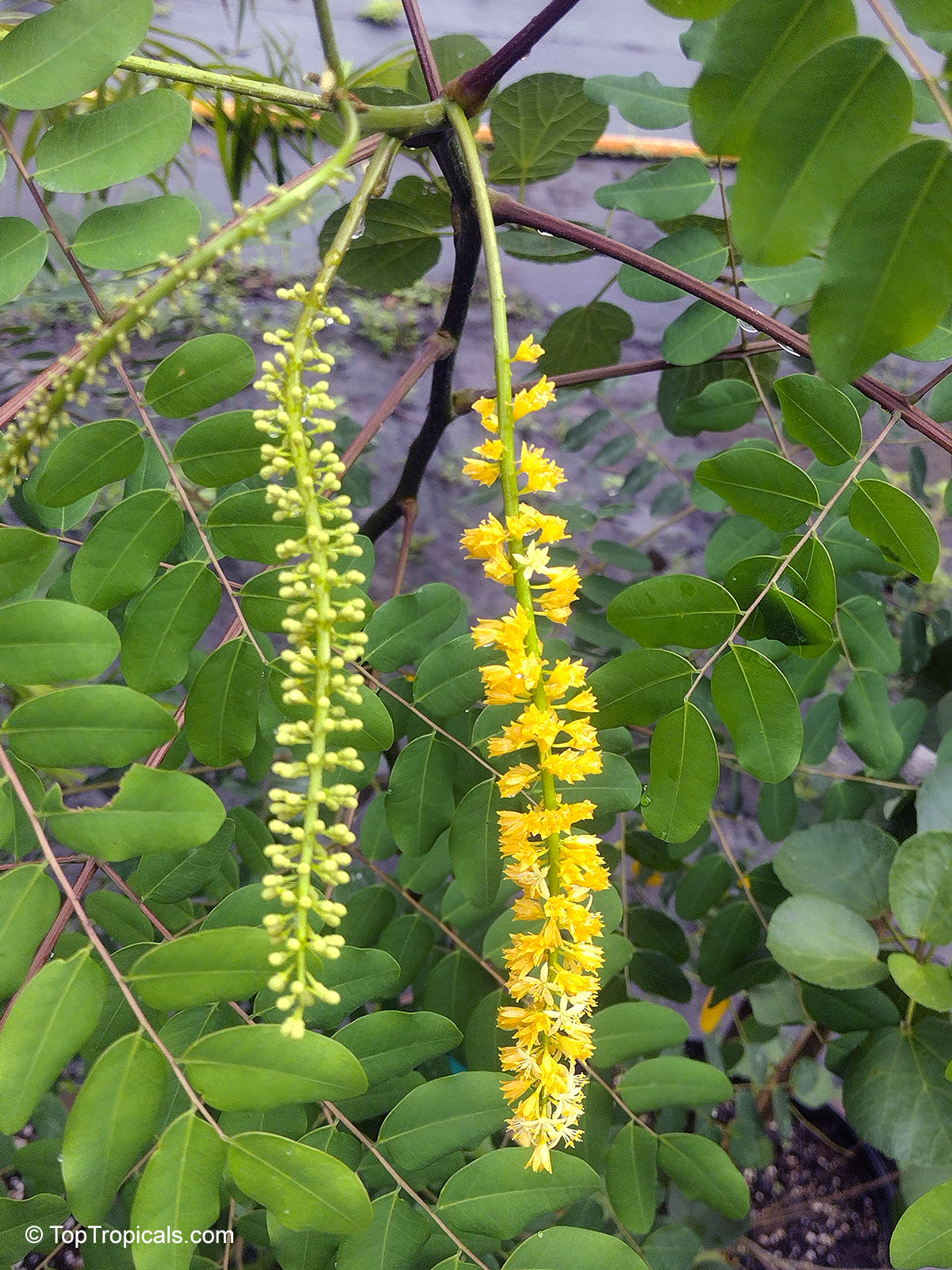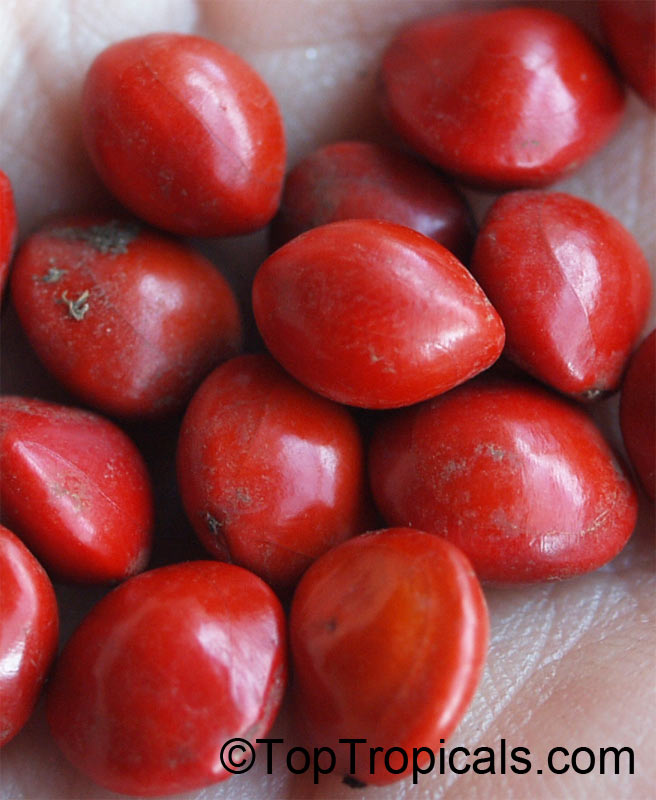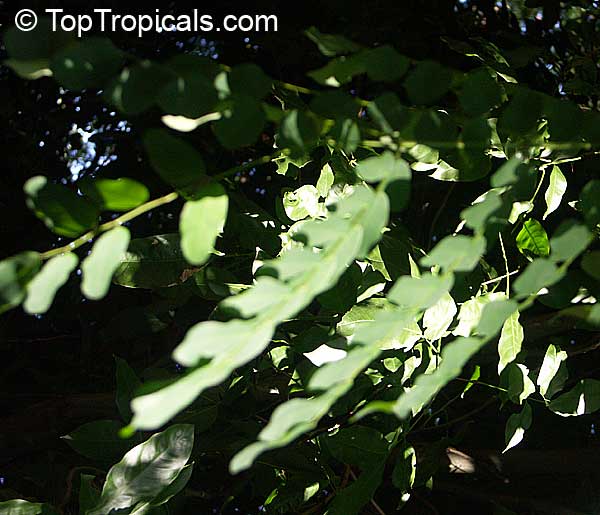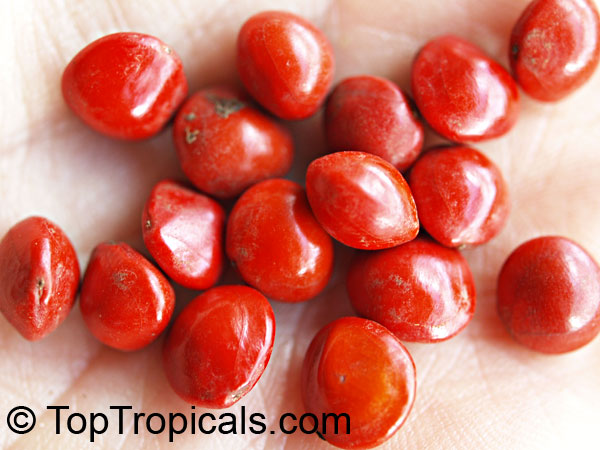Fragrant plant - Search results
Top Tropicals Plant Encyclopedia
| Number of plants found: 920 | Next | 
|
Go to page: | 1 | 2 | 3 | 4 | 5 | Last |
Botanical name: Abelia grandiflora
Common name: Glossy Abelia
Family: Caprifoliaceae
Origin: China










Abelia is a popular evergreen or semi-evergreen shrub with a rounded, fountain-like growth habit. It is fast-growing, growing up to 4-8 feet tall and 4-6 feet wide. Its leaves are fine-textured, glossy, oval, and dark green, usually 2 inches long, and the new growth has a bronze color. Abelia produces small, white and pink tubular flowers in clusters at the end of its stems, from summer to fall. The flowers are barely one inch long, but they are slightly fragrant - which attracts hummingbirds and butterflies.
This shrub is a great choice for planting near a pool, as it loves both full sun and semi-shade exposure. When watering it, allow the soil to dry out between waterings. It is mostly pest- and disease-free. Mature Abelias can withstand temperatures as low as 30 degrees Fahrenheit for a limited time.
Hyperacanthus amoenus is another popular evergreen shrub. It has pinkish red flowers with off-white petals that are fragrant, followed by green fruits that turn brown when ripe. This shrub is easy to grow, needing only full sun and regular watering - though it should be in USDA Zones 8 -9 for full protection from cold weather. For areas with colder climates, it is recommended to keep the plant in a pot and move it indoors in winter. In such a case, extra care should be taken to make sure it has enough water, light and fertilizer. Pruning may also be necessary to ensure the plant remains within the size desired.
Botanical name: Acacia auriculiformis
Common names: Darwin Black Wattle, Ear Pod Wattle
Family: Fabaceae
Subfamily: Mimosoideae
Origin: Australia, New Guinea






Very fast growing, undemanding ornamental and shade tree. Honey-sweet, showy yellow flowers attract bees and butterflies. The plant is amazing in its ability to recolonize waste. Hard to kill. Can grow as much as 6-8 ft per season. Mature trees are medium sized. If you are looking for a fast result, this shade tree is for you. The plant is amazing in its ability to recolonize waste, paper mill sludge; even uranium spoils. This is the only tree found on a 20-year old uranium spoil. Cold hardy to some freeze.
Botanical name: Acacia baileyana
Common name: Purple Fernleaf Acacia
Cultivar: 'Purpurea'
Family: Fabaceae
Subfamily: Mimosoideae







Acacia baileyana 'Purpurea' (Purple Fernleaf Acacia) is a small, drought tolerant tree that can reach 10-20 feet in height in the right conditions. It thrives in full sun, and requires moderate water, which decreases once established. It has ornamental foliage, and produces beautiful yellow, orange flowers. These fragrant blooms attract butterflies and hummingbirds to your garden. It grows best in USDA hardiness zones 9-11.
When planting Acacia baileyana 'Purpurea', dig a hole that is twice as wide as the root ball and around the same depth. This will ensure the roots have plenty of space to spread out. Once planted, water deeply to help the roots establish.
For cold regions, it is best to plant Acacia baileyana 'Purpurea' in a pot and move it indoors in cold winter months. Make sure the pot is well drained and replant every few years for optimal growth. Feeding with a fertilizer in the spring and summer will help promote growth. If you see any signs of disease or pests, treat them as early as possible with an appropriate product.
Botanical names: Acacia cavenia, Mimosa caven
Common names: Espino Cavan, Roman Cassie
Family: Fabaceae
Subfamily: Mimosoideae
Origin: Chile and Argentina





Botanical name: Acacia dealbata
Common names: Silver Wattle, Winter Mimosa tree
Family: Fabaceae
Subfamily: Mimosoideae
Origin: Australia






Acacia dealbata (Silver Wattle) is usually found growing in full sun and can tolerate a range of soils as long as it is well drained. It appreciates moderate water and should be kept evenly moist; it is also moderately drought tolerant once established. This small tree is native to Australia and grows to a height of 10-20 feet, with a spread of 8-15 feet. This tree is invaluable in the landscape due to the profusion of fragrant, yellow or orange flowers that are produced in early spring. Not only do they add much beauty and fragrance to the garden, but they attract both butterflies and hummingbirds.
It thrives in USDA zones 9-11. When planting Acacia dealbata, choose a spot where it can be in full sun and keep the soil evenly moist. In cold regions, the Silver Wattle does best in a container rather than planted directly in the ground. Be sure the container is large enough for the tree to reach its full height, with plenty of drainage. During the colder months, mulch heavily around the container to protect the roots. Water when the soil is dry to a depth of an inch or so, and avoid over-watering as this can lead to root rot. Fertilizer should be applied occasionally during the growing season.
Overall, Acacia dealbata is a unique and beautiful addition to the garden, with its fragrant blooms and stunning foliage.
Botanical name: Acacia decurrens
Common name: Black Wattle
Family: Fabaceae
Subfamily: Mimosoideae
Origin: Australia






Acacia decurrens is a tall shrub or small tree with bipinnate foliage. The ridge that runs along each branch may be used to identify Acacia decurrens. The dark green foliage contrasts with the bright yellow spring flowers.
Acacia decurrens bark was used in the tanning industry. Tolerates full sun and will grow in most soil conditions.
Botanical names: Acokanthera oblongifolia, Acokanthera spectabilis, Carissa spectabilis
Common names: Bushman's Poison, Wintersweet
Family: Apocynaceae
Origin: South Africa
Hardiness: 35°F







This shrub is one of three members of the genus, Acokanthera. It belongs to the same family as many popular subtropical ornamental plants such as frangipani, allamanda and oleander, as well as the impala lily and num-num. This family is characterized by having sweetly scented flowers and sticky, milky sap which is very poisonous. The Bushman's poison is a hardy drought. It's a frost resistant, evergreen shrub that tolerates full sun but prefers shade, it also does well as a container plant.
Botanical name: Acokanthera oppositifolia
Common name: Bushman's Poison
Family: Apocynaceae
Origin: South Africa








Acokanthera oppositifolia (Bushman's Poison) is a large shrub, typically growing 5-10 feet tall. It has glossy dark green leaves that are opposite and grow up to 3-4 inches long. In the spring and summer months, the Bushman's Poison flowering shrub is adorned with white, off-white flowers which have a strong, sweet, perfume-like scent.
In its native habitat, the Acokanthera oppositifolia is mainly used for its ethnomedical applications, such as treatment for headaches, inflammations, fever and even malaria. However, it should be noted that the milky sap is considered to be poisonous or toxic and should not be ingested.
As an ornamental plant, the Bushman's Poison works well in well-drained soil in full sun or partial shade and requires moderate amounts of water. It is suitable for growing in regions with USDA Hardiness Zones 9-11 and a mature plant can tolerate short periods of time in temperatures as low as 30°F. When growing in a pot, it is advisable to move the container to a protected area during cold winters and to protect the roots from the frost.
Botanical name: Actinidia deliciosa
Common names: Kiwi Fruit, Chinese Gooseberry
Family: Actinidiaceae
Origin: China










Actinidia deliciosa (Kiwi Fruit) can grow in full sun and requires regular water. The vine or creeper is deciduous, dropping its leaves in winter. The mature plant is cold hardy in the USDA Zones 7-9. The flowers are white or off-white, and the plant attracts butterflies and hummingbirds. The flowers are fragrant, dioecious or bisexual. Male and female flowers appear on different plants and both sexes have to be planted in close proximity for fruit set.
The fruits can be eaten fresh, juiced, dried, or preserved. The health benefits of Kiwifruit are immense. It is a very good source of dietary fiber, vitamin C, vitamin K, potassium and copper. It also contains vitamins A and E, folate, and some omega-3 fatty acids. One kiwifruit contains about 46 calories and provides 13 percent of the daily Recommended Dietary Allowance (RDA) of vitamin C and, 9 percent of the RDA of dietary fiber. Actinidia deliciosa has the potential to produce hundreds of fruit if planted with another compatible and cross-pollinated variety. The plants may take 3-4 years to bear fruit, but when it matures it can produce great quantities of kiwifruit. The fruit can be harvested when the fruit turns a golden-brown color, and when it is easily plucked from the vine.
Botanical name: Adenanthera pavonina
Common names: Red Sandalwood, Coral Bean Tree, Saga, Sagaseed Tree, Red-bead Tree, Raktakambal, Kokriki
Family: Fabaceae
Subfamily: Caesalpinioideae
Origin: India
Hardiness: 35°F










A medium-sized tree up to 15 m high, Adenanthera pavonina is native to India and Malaysia. It has been planted extensively throughout the tropics as an ornamental and has become naturalized in many countries.
The tiny flowers are said to smell vaguely like orange blossoms.
The slender flattened pods become twisted as they split open at maturity to release up to 12 brilliant red, lens - shaped, extremely hard seeds. The ripened pods stay on the tree for some time. The seeds are used in necklaces and ornaments, as beads in jewellery, leis and rosaries. They were also used in ancient India for weighing gold. The seeds are curiously similar in weight. Four seeds make up about one gramme. In fact the name "saga" is traced to the Arabic term for "goldsmith".
In Malaysia and Indonesia, the trees provide shade and planted as "nurse trees" in coffee, clove and rubber plantations.
Although the raw seeds are toxic, when cooked they are edible: are roasted, shelled and then eaten with rice in Java, Indonesia. In Melanesia and Polynesia people call it the "food tree". The seeds are said to taste like soy bean. The young leaves can be cooked and eaten, but usually only during famine.
The hard reddish wood of the red sandalwood tree is used for cabinet making. A red dye, obtained from the wood, is used by Brahmins to mark religious symbols on their foreheads. A red powder made from the wood is used as an antiseptic paste. In Ancient Indian medicine, the ground seeds are used to treat boils and inflammations. A decoction of the leaves is used to treat gout and rheumatism. The bark was used to wash hair.
Recommended Fertilizer: SUNSHINE Robusta - Rapid Growth Booster
| Next |  |
Use link to repeat this search:
https://toptropicals.com/cgi-bin/garden_catalog/cat.cgi?search_op=and&keyword_op=and&language=e&number=10&no_change_lang=1
&v1=fgt&user=tt&sale=1&first=0
